This page gathers the extended abstracts from Topic 7 of the Compass Conference: Transferable Skills for Research & Innovation, 2023, October 4 – 5, Helsinki, Finland.
Advancing Science and Society: Unveiling the Societal Readiness Level (SRL) for Holistic Integration of Innovations
Leone, C.
Corresponding author – presenter
cinzia.leone@unige.it, University of Genova, Italy
Bencivenga, R.
University of Genova, Italy
Siri, A.
University of Genova, Italy
Keywords: gender, EDI, research, STEM, SSH, Societal Readiness Level (SRL)
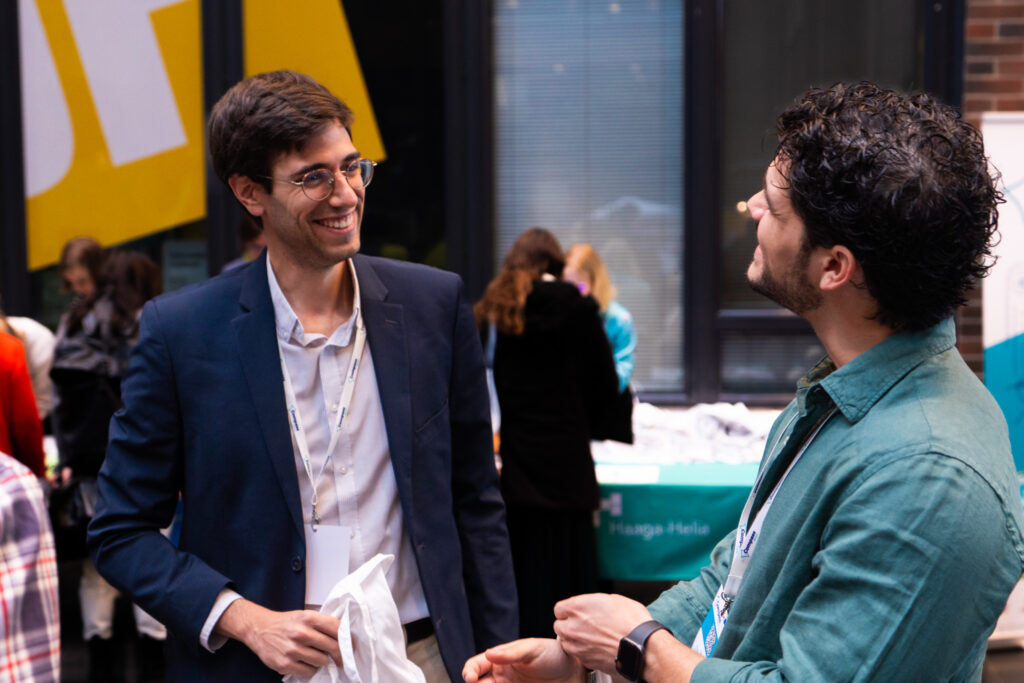
Background and introduction
This paper explores the socio-economic sustainability of research activities in European Academies in the present era. Drawing inspiration from the philosophical insights of Marta Nussbaum, the authors contend that science and humanities possess the potential to forge a harmonious alliance, operating as inseparable allies that intersect and mutually reinforce one another:
By searching critical thought, daring imagination, empathetic understanding of human experiences of many different kinds, and understanding of complexity of the world we live in […] science education has tightly focused on education the capacities for critical thinking, logical analysis, and imagining. Science, rightly pursues, is a friend of the humanities rather than their enemy.
– Nussbaum 2010, 8
There remains a prevalent notion that topics pertaining to gender+, equality, diversity, and inclusion (referred to as EDI hereafter) do not align with, or are deemed incompatible with, the realm of hard sciences. The dichotomy between the two realms, namely the SSH (social sciences and humanities) and the STEM (science, technology, engineering, and mathematics) disciplines, has long been a subject of ongoing debate (Snow, 1969). It is widely believed that SSH disciplines seldom find practical applications in industrial and applied projects, such as technological advancements and related fields.
The mention of Technology Readiness Level (TRL) and experimental development may initially appear risky. However, as we shall explore, the distinctive feature of this contribution will become apparent. It no longer represents a polarised scenario but instead fosters a productive dialogue and collaboration between SSH – specifically EDI – and STEM.
The current landscape is ripe for such integration, as evident in industrial research and experimental development. These endeavours increasingly demand a robust transdisciplinary and interdisciplinary approach that incorporates fields such as sociology, economics, artificial intelligence, anthropology, and numerous related disciplines. This shift represents an innovative and original leap towards fruitful engagement between diverse disciplines in pursuit of scientific progress.
In addition to the measurement of Technology Readiness Level (TRL), we are actively working towards the introduction of a new measurement called Societal Readiness Level (SRL). The SRL provides a means of assessing the extent to which a specific social project, technology, product, process, intervention, or innovation is adapted and integrated into society. The SRL encompasses both societal and technological innovations, recognising that the societal impact and acceptance of an innovation are just as important as its technological advancement.
Objective of the Study and Methodology Overview
This study serves as an integral piece in the puzzle of knowledge exchanges, which stands as the foundation for fostering positive and fruitful cooperation across various domains, including research, society, and the economy. To illustrate the significance of incorporating the EDI approach within the research and scientific sphere, we will provide a concise overview of a few pertinent examples. These examples aim to highlight the necessity of embracing an inclusive culture, which in turn contributes to more comprehensive societal development and to economic growth (EC, 2020).
The economic advantages stemming from gender equality and EDI within the European Union (EU) are widely recognized, as supported by various sources [EUROSTAT, 2021]. Improving EDI has many positive impacts on individuals and on society at large, as demonstrated also by figure 3, taken from the European Institute for Gender Equality (EIGE), which depicts the substantial positive effects that a more gender equal and inclusive EU would have on GDP. This impact is expected to grow over time, resulting in higher levels of employment and increased productivity.
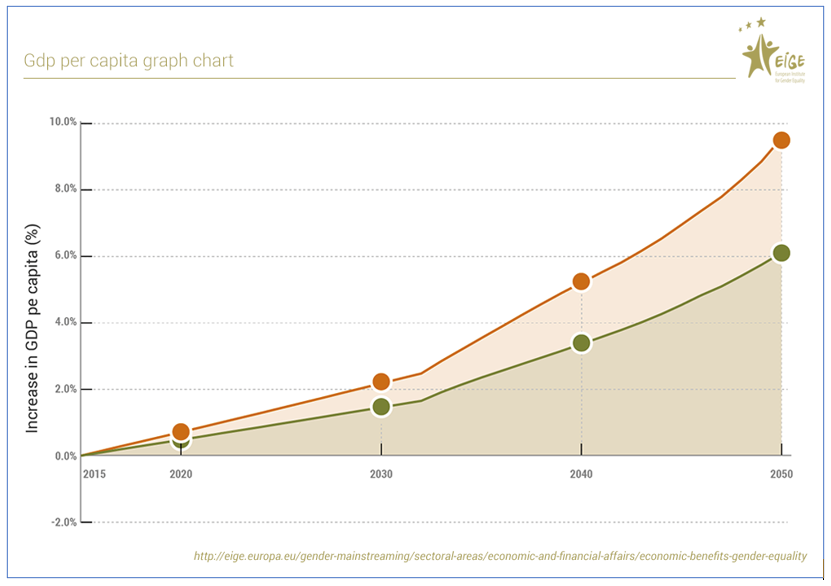
Figure 1 Effect of gender equality on GDP per capita
Source: EIGE. eige.europa.eu/. last access 2/05/2023
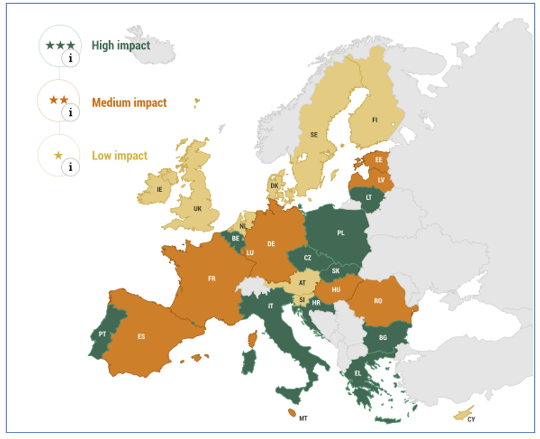
Figure 2 Impact of GE in the GDP within the EU in 2030 (data 2022, same source as previous figure)
According to the information provided on the EIGE website, it is estimated that “by 2050, improving gender equality would lead to an increase in EU (GDP) per capita by 6.1 to 9.6%, which amounts to €1.95 to €3.15 trillion” (same source as figure 3). Evidence shows that this improvement in gender equality would result in the creation of approximately 10.5 million additional jobs by 2050, benefiting both men and women. However, it is important to note that approximately 70% of these new jobs would be occupied by women, contributing to an overall employment rate of 80% by 2050. This increase in women’s employment would have a positive impact on reducing the number of NEETs (young people not in education, employment, or training), alleviating poverty, mitigating social exclusion, and addressing related social issues. Additionally, countries that currently lag in terms of employment rates, GDP, and women’s participation in the job market would particularly benefit from this transformation, as depicted in the accompanying figure.
An example worth mentioning is Italy, which stands out among the countries expected to have a significant impact on GDP growth but also faces relatively low levels of gender equality (GE), along with Portugal, Greece, Bulgaria, Belgium, Czech Republic, Poland, Slovakia, Hungary and Lithuania. There is also a demonstrated correlation between gender equality and GDP growth (amongst others: Peña-Sánchez, A.R.; Ruiz-Chico, 2020; Piazzalunga and Di Tommaso, 2019; Maceira, 2017).
To prevent our universities from becoming isolated in a rapidly evolving world, it is imperative to wholeheartedly incorporate an EDI approach into the research culture of our modern academic institutions. This integration should extend beyond specific initiatives and be ingrained in everyday practices, courses, and teaching activities. Unfortunately, EDI and GE are often regarded as isolated endeavours, implemented merely to fulfil institutional Gender Equality Plans (GEP) and secure access to research funding. However, it is crucial to recognise that change should be driven and sustained not only by ethical considerations but also by the economic and social benefits it brings. Embracing EDI is not just the right thing to do; it is also a strategic choice that yields advantages in multiple spheres.
Multiple EU-funded projects and investigations have provided additional evidence to support our assertions. We have utilized findings and experiences from various EU-funded research and innovation projects, involving the University of Genova, to bolster our claims: Genrem; Risewise; Ulysseus; Compass; Milieu; Genderex; xFormal; Remap; Edire; Step (info at disposal).
These projects encompass diverse topics and exhibit a wide range of focuses, yet they all share a common thread of EDI integration, embracing an intersectoral, intersectional, and comprehensive approach. This infusion of innovative and original elements has enriched established investigation procedures and expanded the boundaries of existing knowledge domains.
This different way of thinking approaches the problem from a trans- and multidisciplinary perspective. Bypassing the mere consideration of a single discipline to find a specific keystone or point of view, it adopts a holistic approach that integrates different fields of knowledge, thus enhancing the SSH/STEM dialogue and the application of the already formulated SSH concept into a more application-oriented field by using STEM tools and, where possible, vice versa.
Another noteworthy aspect pertains to the acknowledgment of vulnerabilities and the embrace of diversity, which has led to the development of activities and plans that address various forms of inequality that impede resilience. These efforts encompass dimensions such as gender, ethnicity, origin, disability, age, culture, workplace diversity, and more. Importantly, these endeavours consider the individual context and give voice to diverse groups.
Results
The outcomes and impacts of the activities and concepts presented in this article can be observed in various project outputs and their consequential effects. While limited space prevents us from listing all the positive results, we will highlight a few that support the final conclusions.
- 1. The project partners and participating institutions have been encouraged to adopt a consistent and comprehensive observation of scientific phenomena or events through the lens of EDI. This is achieved by implementing various measures, such as: promoting more inclusive and diverse use of language, incorporating dedicated gender+ actions throughout the project activities, striving for gender balance in the participation of individuals whenever feasible, collecting disaggregated data to ensure a nuanced understanding of the research or event outcomes, acknowledging and addressing instances of diversity, and accommodating the diverse needs of participants involved in the research or events.
By adopting these measures and embracing an EDI approach, the projects and institutions aim to foster an inclusive environment that values and considers the perspectives of all individuals involved.
- 2. A Gender+ Action Plan (P_GAP) is provided to partners involved in each proposal originating from the Ulysseus alliance and beyond. This plan serves as a customised GEP specifically designed for the implementation of individual projects, incorporating an EDI approach in the activities across the work packages (hence the term gender+).
- 3. The REMAP project, led by the University of Genova, received funding following an invitation from the European Commission to address concerns raised in the initial evaluation report through the “Right to React” procedure. The evaluation report identified three key areas requiring further attention. Notably, one of these areas pertained to gender considerations, which posed questions regarding the gender dimension and approach within a nanomaterials project. This observation highlighted not only the importance of interconnecting various scientific disciplines but also the pervasive nature of the gender dimension in contemporary research.
Conclusions
Thanks to the successful development of the aforementioned research and innovation projects, our research group at the University of Genova has gained valuable experience over the past seven years. This experience has led us to the conclusion that academia still tends to approach its academic life “with little attention to the role of science and technology in perpetuating inequalities” (Bernstein et al., 2022, p. 1). However, individual research projects and groups have the potential to make a difference by bridging the gap between different disciplines, including those typically considered distant from the social sciences and humanities (SSH).
Undoubtedly, the recent requirement to implement a Gender Equality Plan (GEP) to access public funding for research at the European level starting from 2022 has proven advantageous. Notwithstanding, it is important to acknowledge and address resistance and unconscious biases, which should not be underestimated. Dedicated actions and activities, both at the project and institutional levels, are necessary to combat these challenges. Establishing formal or informal focus groups, proposing role models, and fostering an inclusive institutional climate are key components in addressing the societal gap that is reflected in the production of knowledge.
Through our daily research activities, we contribute to the transformation of our societies and their progress towards more inclusive and citizen-friendly technology. This, in turn, contributes to the sustainability of choices and the overall advancement of society.
References
Bernstein, M.J., Nielsen, M.W., Alnor, E. et al. (2022). The Societal Readiness Thinking Tool: A Practical Resource for Maturing the Societal Readiness of Research Projects. Sci Eng Ethics 28, 6. https://doi.org/10.1007/s11948-021-00360-3
European Commission (2020). Gendered Innovations 2: How inclusive Analysis Contributes to Research and Innovation.
Eurostat (2021). The life of women and men in Europe, 2021 interactive edition. https://ec.europa.eu/eurostat/web/products-interactive-publications/-/ks-08-21-315. Last access 30/4/2023.
Maceira, H.M. (2017). Economic Benefits of Gender Equality in the EU, Intereconomics, ISSN 1613-964X, Springer, Heidelberg, Vol. 52, Iss. 3, pp. 178-183, https://doi.org/10.1007/s10272-017-0669-4
Nussbaum, M. (2010). Not for Profit. Why Democracy Needs the Humanities. Princeton University Press, Princeton and Oxford.
Peña-Sánchez, A.R.; Ruiz-Chico, J.; Jiménez-García, M.; López-Sánchez, J.A. (2020). Tourism and the SDGs: An Analysis of Economic Growth, Decent Employment, and Gender Equality in the European Union (2009–2018). Sustainability, 12, 5480. https://doi.org/10.3390/su12135480
Piazzalunga, D.; Di Tommaso, M.L. (2019). The increase of the gender wage gap in Italy during the 2008- 2012 economic crisis. The Journal of Economic Inequality (2019) 17:171–193. https://doi.org/10.1007/s10888-018-9396-8
Snow, C.P. (1969). The two cultures: and a second look. Cambridge: Cambridge University Press.
Catastrophic aesthetics. A new term for the resurgence of sensitivities.
Macías Recio, Alicia
alicia.macias@unir.net
Universidad Internacional de La Rioja, Spain.
Key words: Anthropocene, collapse, selective sensitivities, catastrophic aesthetics, aesthetics of life.
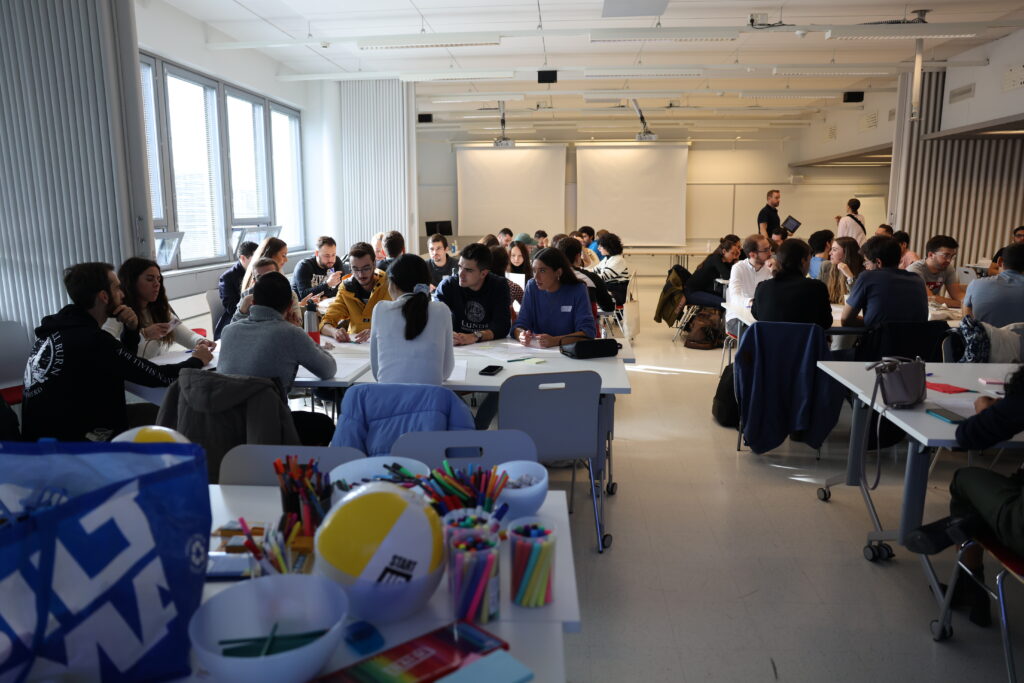
Background of the study
When talking about collapse, we are not quite sure what we are referring to: a global, broad spectrum catastrophe, or specific disasters, whether in the economic, social or natural spheres. Nor are we quite able to recognize the when, the temporal extension of the term, i.e., we do not know whether the collapse is something that has been going on for some time, has just begun, or is yet to come. Numerous scientists have turned their attention to this controversy, from the results of which an overview of the what and when of the collapse will be drawn. Later, the restructuring of knowledge resulting from the shift in the balance of science that took place in the late nineteenth and early twentieth centuries will also be studied, since in the midst of the Anthropocene era, there are authors and disciplines that move away from purely epistemic scientific assumptions and begin to study the collapse based on other ways of knowing. Moreover, there are disciplines such as collapsology, the audiovisual field or design that, in addition to sharing knowledge and raising awareness, act as catalysts of the experience and propose possibilities that articulate new sensibilities about the catastrophe, its effects and, more importantly, about the opportunities the disaster can offer. It is in this scenario where the present study is framed, which will explore the how through an approach to the problem from an aesthetic way in order to be able to better understand the term of collapse. This being so, the research project, of which we will now sketch the most important ideas, will be impregnated with the study of sensitivities that the social experience of the global emergency arouses.
Aim of the study including originality & novelty
General objective
Understand the global catastrophe from the sensitive and collective experience. This will be the main objective, with which we will seek to respond to the controversy of the planetary and imminent collapse, specifically, by studying it from the scope of the sensitivities it raises.
Specific objectives
- Examine the planetary collapse and its implications. This objective is eminently bibliographical. It will be necessary to detail what we are talking about when we refer to the catastrophe and the origin of this knowledge and experiences.
- Explore the possibility of accessing the problem of catastrophe from an aesthetic point of view. Once the roots of the collapse have been studied, it is necessary to find out which have been the ways of understanding it.
- Inquire into the use of the term catastrophic aesthetics as an aesthetic category that refers to the way of experiencing the sensibilities that surround the collapse and that will be identified as strategies that prevent, to a great extent, the clear and responsible development of the shared space. This third and last objective makes up the fundamental point of interest of the work and is situated as the main reason that justifies its novelty and relevance.
Methodology
The elaboration of the project will follow a transversal and mainly theoretical line of research on the subject of collapse and its effects on the inhabitants of planet Earth, especially the human species, through its sensibilities and aesthetic experiences.
In relation to the references, a bibliographic review will be carried out in order to study, analyse, and unpack some of the ideas that have been elaborated around the concept of collapse and, later, to select, relate and synthesize them in order to finally shape the present article.
The sources of information to be used, which will range from websites or audiovisual materials to academic articles and philosophical essays, will be chosen on the basis of an objective selection with the purpose of the predominance of primary references, ensuring truthful, sensitized and transdisciplinary information.
Result/findings and argumentation
The first part of the project reviews the different factors that shape the collapse, which are divided into levels of effect: geological, biodiversity, temperature level, health level, and the economic, the political and the social level. When it comes to understanding these factors, we often make the mistake of treating them separately. As Bruno Latour puts it: “to some extent we all are climate change negationists, as we are incapable of grasping the collective character: the anthropos of the Anthropocene” (2012, p. 69). The human species continuously loses sight of the potential of studying realities from their multiplicity and, thus, this gives rise to the dissipation of a possible collective and pluriversal political body that rearticulates an affirmative globality with which to begin to operate on or in this collapse that we have defined as: a set of disruptive episodes of ecological, climatic, natural deterioration and also related to health, economy, politics and the social dimension of our communities, a collapse that threatens the states of socio environmental wellbeing, menacing all life on Earth. Now, who has been in charge of characterizing the nuances of the planetary emergency? To tell the truth, it has not only been studied from the field of science, there have been others who have approached it as well, but with a restructuring of knowledge and, above all, readjusting the differences between the objects and subjects of research. These new approaches choose to distance themselves from the mere fact of knowing and prefer, instead, to study how it is known, who does it and when these actions are carried out either from the past, the present or the future.
As for the second part of the project, it is dedicated to an aesthetic approach to the topic of collapse. Throughout the text we argue that in our contemporaneity we operate according to the “aesthetic regime of arts” established by Jacques Rancière (2014), by which the important thing to consider is not the application of the “technique” but the ways an artwork can be “sensitive” (p. 35). In other words, Rancière established art as a possibility on its own, therefore the aesthetic experience would be an epistemic act: “The aesthetic mode of knowledge is much more than an art’s knowledge. It is an idea of knowledge linked to an idea of the distribution of the sensible” (2014, p. 70). We realize then that it is not just a matter of looking, as it is done with the scientific method, but also of observing our sight. Here certain positive aspects emerge, which will imply that knowledge is no longer formed only by ideas and abstractions, but that life experiences, perceptions and the sensible come into play and shape both what we know about the world and also how we are in the world.
To better understand the negative aspects and their texture in the midst of collapse, we have used concepts from various authors. On the one hand, the “abysmal lines” of Boaventura de Sousa (2009, 2010), which explain how the limits that we recognize in the separation of North and South are also reproduced in the sensitive experience, enabling us to feel, appreciate or signify some experiences while others, such as garbage, social stratification or pollution, are relegated to the background, losing all their aesthetic power. Furthermore, De Sousa affirms that acknowledgment of this fact “is the conditio sine qua non to start thinking and acting beyond it” (2010, p. 49). Those sensitivities that we do allow ourselves, on the other hand, will be those that we have identified, following Enrique Dussel (2020), as “selective sensitivities”, that is, the moments of sensitive appreciation accepted and advocated by our ecological social systems, as he speaks about “sensitivities” as “static subjectivities” (p. 205), that is, aesthetic flashes/instants. However, there is still more, going to the “banality of evil” as Hannah Arendt described it (2005 [1963], 2009 [1958]) and the “necropolitics” of Achille Mbembe by which popular opinions’ singularity is neglected (2011, 2017), this way of relegating certain facts, events, beings and things to nothingness, just as was done with the Jews in the Holocaust and continues to be done today on colonial territories, could be called the banality of experience, since we have reduced fundamental issues such as pathogens, oil, temperature, demographic crisis and a long etcetera to a sort of living death in order to be able to comfortably deny ourselves their experimentation and, therefore, their consideration.
Conclusion, managerial implications and limitations
The greatest contribution of the text may reside in the articulation of an aesthetics of life as a positioning that enlarges the Rancierian aesthetic regime. This new regime is presented as a way to understand aesthetics as an ontological totality, where appreciations are no longer born from the subjectivity of individuals, but the sensitive abilities are something present in the world, that is to say, the aesthetics of life is a way of existing of things and beings.
Relative to the term catastrophic aesthetics, this contribution is perhaps even more important, since it has emerged from the enthusiastic exploration to understand and give a name to the set of sensibilities that characterize the type of responses that the human species offers in the face of planetary collapse and that, in most cases, are close to conformism.
In sum, the paper proposes methodologies and viable ways to begin to understand the socio environmental collapse from its aesthetic side, paying attention to the multiple dimensions of life and understanding both knowledge and appreciations as agents operating in the world and of the world, so that the aesthetics of life to which it is intended to arrive must be recognized as having ontological weight. In this respect, and recognizing the possible limitations of the project, we are aware of the difficulties of presenting the aesthetics of life as beyond the subjective plane, since the very fact of thinking it implies that the experiential epistemology we seek, however, is blurred. In any case, this paradox presents itself as a new door for future research, raising questions to be addressed later on.
References
Arendt, H. (2005 [1963]). Eichmann en Jerusalén. Debolsillo. Arendt, H. (2009 [1958]). La condición humana. Paidós.
Bernard, J., Desjardins, G. and Ughetto, B. (Directors). (2019). El colapso [miniseries]. Canal+. Brady, E. (1998). “Imagination and the Aesthetic Appreciation of Nature”. Environmental
Aesthetics, vol. 56, nº 2, pp. 139 147.
Chakrabarty, D. (2009). “The climate of History: Four Theses”. The University of Chicago Press, vol. 35, nº 2, pp. 197 222.
De Sousa, B. (2009). Una epistemología del sur: la reinvención del conocimiento y laemancipación social. Siglo XXI editores.
De Sousa, B. (2010). Descolonizar el saber, reinventar el poder. Ediciones Trilce.
Dussel, E. (2020). Siete ensayos de filosofía de la liberación. Hacia una fundamentación del giro decolonial. Trotta Editorial.
Han, B. C. (2020). La desaparición de los rituales. Una topología del presente. Herder Editorial.
Haraway, D. (2016). Staying with the Trouble: Making Kin in the Chthulucene. Duke University Press.
Harbison, C. (1995). The Mirror of the Artist: Northern Renaissance Art in its Historical Context. Abrams.
Latour, B. (2004). “What is Given in Experience? A Review of Isabelle Stengers ‘Penser avec Whitehead’”. Boundary 2, vol. 32, nº 1, pp. 222 237. Duke University Press.
Latour, B. (2007). “A Textbook Case Revisited. Knowledge as a mode of existence”. At Hackett, Edward J., Lynch, Michael, Wajcman, Judy, Amsterdamska, Olga (Eds.) The Handbook of Science and Technology Studies – Third Edition, pp. 83 112. MIT Press.
Latour, B. (2012). “Esperando a Gaia. Componer el mundo común mediante las artes y la
política”. Otra Parte. Revista de Letras y Artes, nº 26. Buenos Aires.
Mbembe, A. (2011). Necropolítica. Melusina.
Mbembe, A. (2017). Rethinking Democracy Beyond the Human [lecture]. The European Graduate School. YouTube. https://www.youtube.com/watchv=A_k3YIupGok&ab_channel=EuropeanGraduateScho
Meadows, D. et al. (1972). The Limits to Growth. Potomac Associates – Universe Books. Moore, J. W. (2020). El capitalismo en la trama de la vida. Ecología y acumulación de capital.
Traficantes de Sueños.
Morton, T. (December 13th, 2016). “Timothy Morton: una ecología sin naturaleza”. Dossier Posthumanismo(s). CCCBLAB. https://lab.cccb.org/ca/timothy-morton-una-ecologia-sense-natura/
Nassauer, J. (1997). Placing Nature: Culture And Landsacpe Ecology. Island Press.
Rancière, J. (2007 [1987]). El maestro ignorante. Cinco lecciones para la emancipación intelectual. Libros del Zorzal.
Rancière, J. (2014). El reparto de lo sensible. Prometeo Libros.
Scheffer, M. et al. (2003). “Slow response of societies to new problems: causes and costs”.
Ecosystems, vol. 6, nº 5, pp. 493 502. Springer Nature.
Sepänmaa, Y. (1997). Real world design: the foundation and practice of environmental aesthetics. University of Helsinki, Lahti Research and Training Centre.
Servigne, P. y Stevens, R. (2021). Colapsología: El horizonte de nuestra civilización ha sido siempre el crecimiento económico. Pero hoy es el colapso. Arpa.
Tafalla, M. (2019). Ecoanimal. Una estética plurisensorial, ecologista y animalista. Plaza y Valdés.
Tironi, M. (2014). “Hacia una política atmosférica: químicos, afectos y cuidado enPuchuncaví”. Revista Pléyade, 14, pp. 165 189.
Characterising seasonal dynamics of urban vegetation at a neighbourhood scale: Application of very high-resolution satellite imagery
García-Pardo, Karina Angélica
kargarpar@alum.us.es
ETSA, Universidad de Sevilla, Spain
Moreno-Rangel, David
Instituto Universitario de Arquitectura y Ciencias de la Construcción
ETSA, Universidad de Sevilla, Spain
Domínguez-Amarillo, Samuel
Instituto Universitario de Arquitectura y Ciencias de la Construcción
ETSA, Universidad de Sevilla, Spain
García-Chávez, José Roberto
Autonomous Metropolitan University – Azcapotzalco UAM, CyAD, Medio Ambiente, Posgrado en Diseño Bioclimático, Mexico
Keywords: urban vegetation, ecosystem services, very high resolution imagery, remote sensing
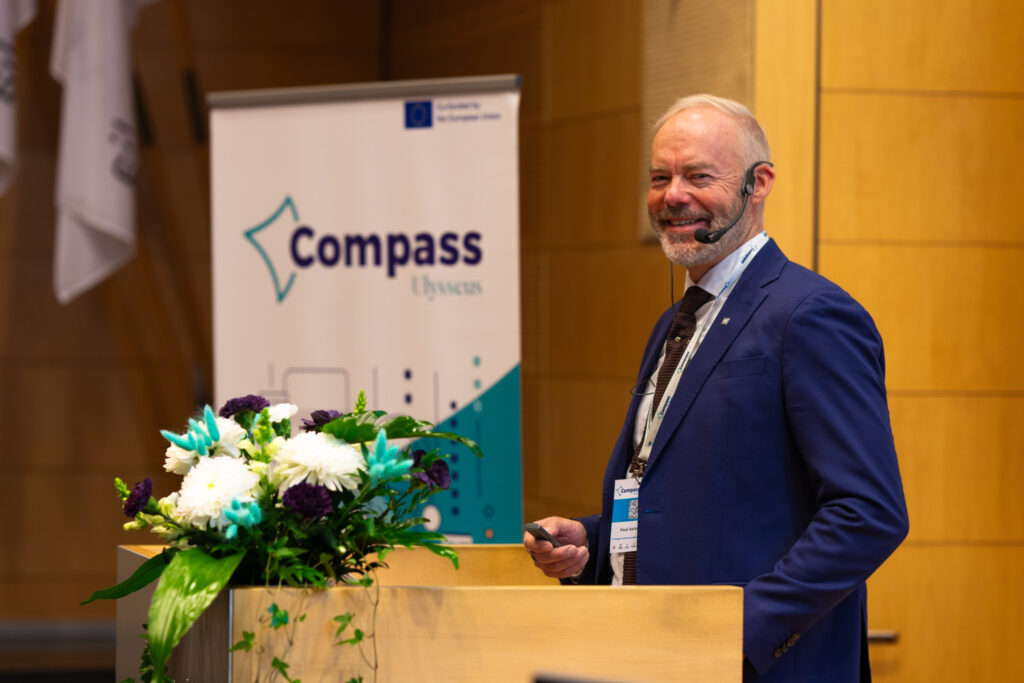
Abstract
Recognition of the ecosystem services provided by natural elements in urban environments to counteract the negative impacts derived from them has led to increased interest in their study. However, the complexity underlying current urban environments presents challenges in the inclusion of the natural element “vegetation” due to inefficiency regarding time and cost processes. This study presents a method to integrate the characteristics of urban vegetation in its spatial and temporal scale using remote sensing (RS). To achieve this, very high resolution (VHR) satellite images were used, and methods were applied to characterise the vegetation in two seasonal periods (winter and summer), within an urban neighbourhood. The results obtained allow us to see the general behaviour of the vegetation in the two periods, compare areas within the same neighbourhood, and define priority areas for action to contribute to achieving an ecosystemic balance, and to counteract negative impacts in urban environments (increase in temperatures, emission of pollutants, water runoff, loss of biomass, etc.).
Background
The Millennium Ecosystem Assessment (MA) led to the recognition and classification of the benefits provided by nature, identified as “ecosystem services” (MA, 2005). This recognition has focused on quantifying their values and in particular their complex relationship with ecological and socio economic systems, and how tradeoffs in this relationship affect human wellbeing (Johnston, 2018), showing a rise in the assessment of these services (Fisher et al., 2009) in the last two decades, with an exponential increase in the application of remote sensing (RS) (Sishodia et al., 2020).
The relationship between the study of ecosystem services and RS arises with the characterisation of soil type (Feng et al., 2010), biomass (Wu, 2019), Leaf Area Index (LAI) (Zheng & Moskal, 2009), space and time monitoring of vegetation (de Beurs & Henebry, 2004), among others, which enables to identify the contribution of ecosystem services from natural elements on the surface (Andrew et al., 2014), important to counteract the negative impacts in cities and support decision making processes.
Therefore, RS represents potential tools for cities and the assessment of ecosystem services provided in them, where the comparison of ground based assessments and RS frequently appears (Wu & Bauer, 2012; McGee III et al., 2012; Hostetler et al., 2013; García-Pardo et al., 2022) with RS primarily being found to be more practical and cost effective (Alonzo et al., 2016), enabling the observation and integration of vegetation within urban studies.
Aim of study
The aim of the study is to characterise the existing urban vegetation in a neighbourhood, considering: its coverage, vegetation levels, and the changes it has between two periods corresponding to winter and summer.
For this purpose, VHR satellite images have been used and processed in a Greographic Information Systems (GIS) software ArcGIS Pro, where they were compared with field measurements to validate their effectiveness as a method for their integration in urban studies. With the proposed characterisation we seek to fill in the gap of the challenges within the study of urban vegetation and show a method that allows the identification of vegetation in its spatial and temporal scale, guiding towards decision making processes and urban planning strategies searching for an ecosystemic balance.
Methods and data
Data sources
In this study, 2 VHR Pléiades 1A imagery were acquired. These images consist of 4 band multispectral images with an original resolution of 2 m x 2 m per pixel, and its selection depended on the seasons of interest for the study (winter and summer), with one image taken on January 14, 2022, for winter and one on July 22, 2021, for summer. Following this, a Pansherpening /em>process was applied to reach submeter resolution in both spatial and spectral domains, improving the MS imagery to 50 cm x 50 cm per pixel.
Study area
The study was carried out in Canillas, an urban neighbourhood in Madrid, the capital of Spain (see figure 1). The interest in its application is related to the urban transformations it has experienced, its peripheral location within the city, its qualification as a vulnerable neighbourhood, its classification in the Köppen Geiger as hot summer Mediterranean with hot and dry summers and mild wet winters, and its potential in being a study example for application in other urban areas in Mediterranean cities.
The application of the method in the study area is for validation purposes, therefore, the study considers the possibility of its application in other locations and urban scales where vegetation has not been identified on a spatial and temporal scale.
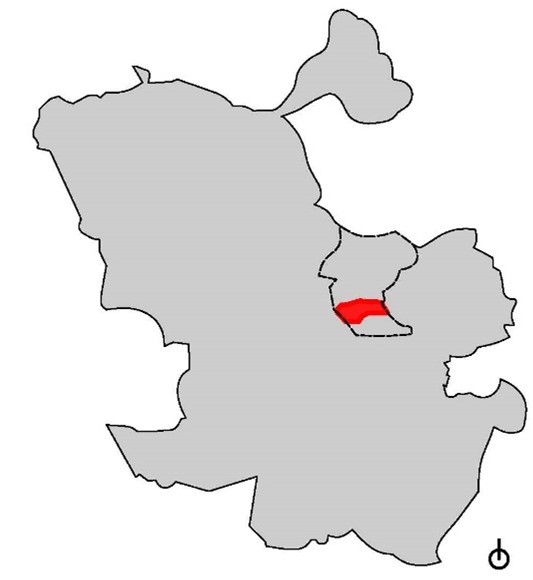
Figure 1. Study area: Canillas neighbourhood (red), Hortaleza District (dotted line), Madrid, Spain.
Data retrieval for vegetation variables
This study assessed the characteristics of urban vegetation in the study area, including: the classification and quantification of vegetation cover (VC), vegetation levels within VC (VLC High, Medium and Low), and the vegetation cover and levels changes between winter and summer (VCC, VLCC). To retrieve these characteristics and to make comparisons between areas, a grid based approach of 100 m x 100 m square cells (polygons) was applied in the neighbourhood.
Subsequently, we applied the Normalized Difference Vegetation Index (NDVI) to classify the vegetation for the two representative seasons, calculated from the VHR imagery bands as follows:

After applying the NDVI, a supervised Land Cover Classification (LCC) from an Object Based Image Classification (OBIA) was conducted and the final classification was validated from an accuracy assessment. Following the classification, the characterisation of vegetation levels was carried from an NDVI threshold to classify each vegetation class pixel into high, medium, and low vegetation level. From the classification the vegetation variables were calculated as follows:
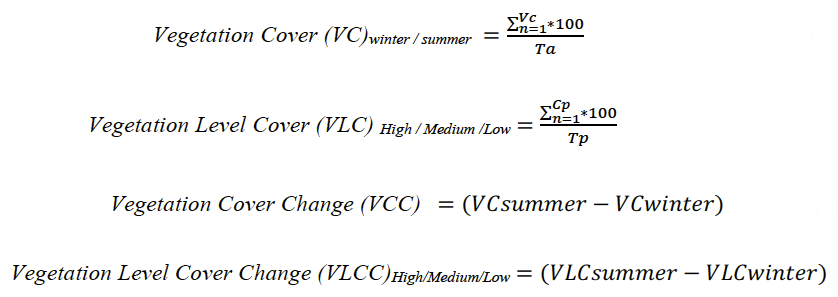
Where V c are the vegetation cover class polygons. The VC indicates the percentage of area covered by the vegetation class for winter or summer over the Ta of each polygon. Cp is the pixel characterised with a vegetation level, and Tp is the total number of pixels within the polygon (40 000).
Figure 2 illustrates the characteristics retrieved to calculate the vegetation variables explained above for each of the polygons within the neighbourhood.
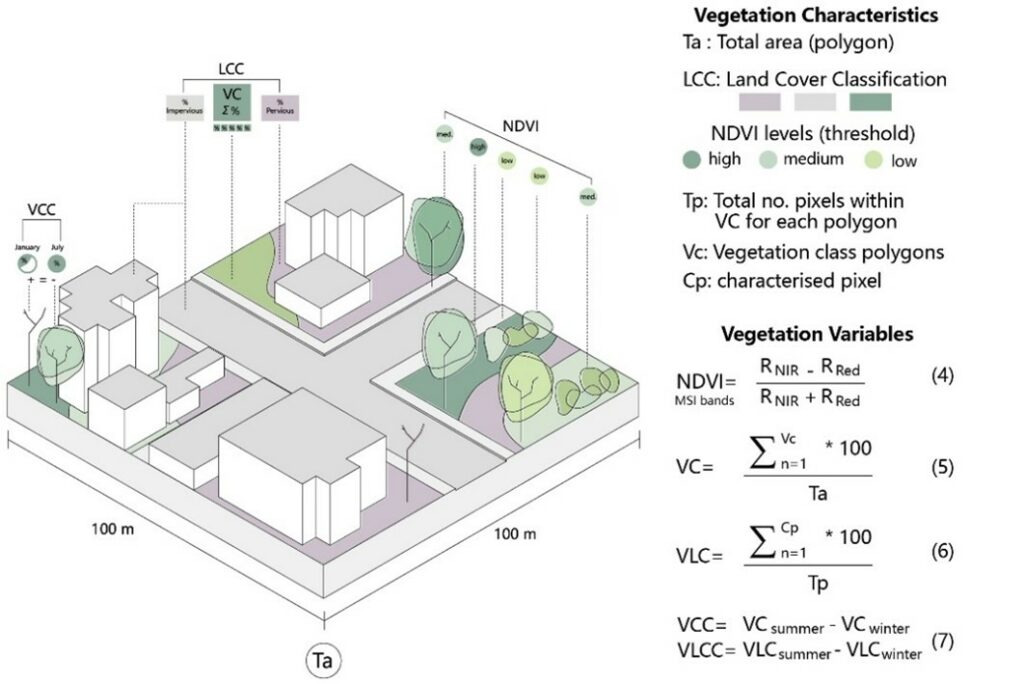
Figure 2. Vegetation variables: VC (winter and summer), VLC (high, medium, and low), VCC, and VLCC (high, medium, and low).
Data analysis
To analyse each of the variables, identify their overall behaviour, and to make an inter comparison between areas within the neighbourhood, the data were standardised (z score). Subsequently, the distribution of the data for each variable was observed and significant values (upper and lower outliers), and average values were identified.
Results
The general observation of the results for the VC variables for winter and summer showed a wider distribution of VCw than that of VCs, showing greater variation in vegetation cover in winter than in summer. The two variables show no minimum or maximum outliers, all of which are within the interquartile range.
However, the average value of VCw is higher than VCS, indicating less vegetation cover in summer than in winter. In addition, we find that the maximum and minimum values in summer are lower than in winter.
Vegetation levels
As for the vegetation levels, each level was analysed and compared by season. In the distribution of the results of the VLCs in winter, we observed that VLCwL has a greater variation of values than those of high (VLCwH) and medium (VLCwM) levels. Regarding the distribution of the VLCs in summer, VLCsM has the greatest variation of values and VLCsL the least variation among the 3 variables.
VLCwH, corresponding mostly to vegetation such as trees, has a higher concentration of values in the upper range, with high outliers, which does not persist in VLCsH, possibly indicating an ecosystemic imbalance, such as the increase in surface temperatures between winter and summer due to the decrease in the provision of shades from trees.
Comparing VLCwM with VLCsM, we find that the upper outliers in winter do not persist in summer either, but the variation of VLCsM values is greater than in winter, which may indicate more vegetation phenological changes in summer.
As for VLCwL and VLCsL, the variation of values in summer is narrower than that in winter, which may indicate lack of irrigation to maintain this type of vegetation (mostly associated with grass), also influencing surface temperatures.
Vegetation cover change
Regarding the analysis of vegetation cover and level change (VCC y VLCC High, medium and low), the overall vegetation cover change (VCC) has an average decrease between winter and summer, where upper and lower outliers are also identified, which could result in an ecosystem imbalance for the ecosystem services required to regulate the increase of temperatures during summer or the decrease of temperatures during winter.
In VLCCH there is an increase in this level of vegetation between winter and summer, however, this is small, which would require further analysis to qualify the increase and determine its significance.
VLCCM shows the lowest variation of values, but with a higher number of lower outliers representing a decrease in this level of vegetation (mostly associated with shrubs) between winter and summer. Finally, VLCCL shows an average value corresponding to the decrease of this vegetation level between winter and summer, coinciding with the comparison of the variation of values between VLCwL and VLCsL.
Following the analysis of all variables, each variable’s results were plotted for the entire neighbourhood using their standardised values to visualise and characterise areas in the neighbourhood that differed from the neighbourhood’s average. Table 1 shows the maps created for each vegetation variable (12).
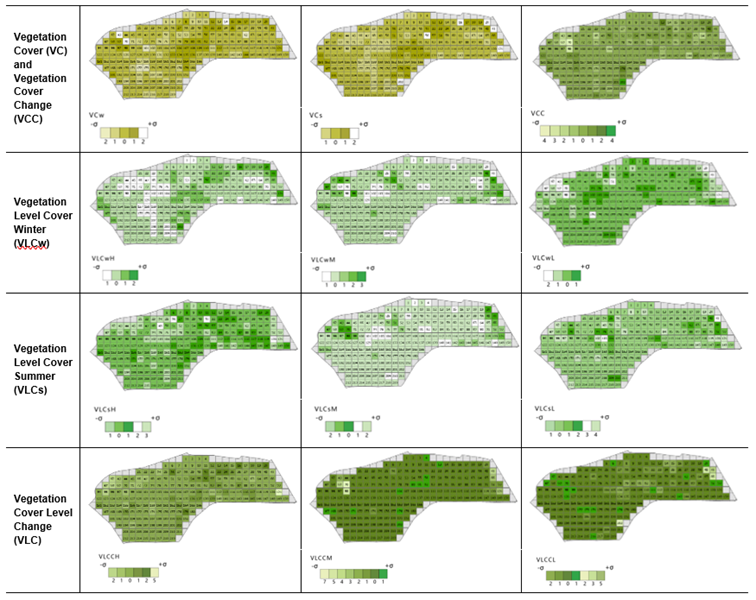
Table 1. 12 Vegetation variables mapped in the neighbourhood.
Discussion and Conclusion
In this study we aimed to contribute to the gap on the inclusion of vegetation in urban studies using RS, not only to classify the vegetation cover but also to characterise it in terms of its vegetation levels and to observe the changes in two different seasons of the year with greater changes in the climatological conditions.
Consequently, the study showed a substantial strength in terms of VHR imagery and its ability to identify vegetation, from which Kappa coefficient values and overall accuracy values above 85% were obtained from sampling points in the neighbourhood. This indicates the possibility to employ these images to classify surfaces in an urban environment, making it cost and time effective compared to field measurements.
The results obtained after analysing each variable in the neighbourhood enable us to diagnose a study area based on the existing vegetation cover, as deficiencies were identified in areas with vegetation below the neighbourhood’s average, as well as opportunities where vegetation is above the average.
The proposed method has an interest in its application for urban practices where priority areas for intervention can be selected. Examples of application for practitioners and the design of strategies include the provision of vegetation levels associated with a specific problem, such as increasing high level vegetation in public spaces to provide shade in the summer period. Other examples include the selection of areas where low level vegetation can be introduced for albedo control on surfaces with materials that are not suitable for the urban microclimate, all of which leads to find an ecosystemic balance and ensure the wellbeing urban inhabitants.
References
Alonzo, M., Mcfadden, J. P., Nowak, D. J., Roberts, D. A. (2016). Mapping urban forest structure and function using hyperspectral imagery and lidar data. Urban Forestry & Urban Greening.
de Beurs, K. M., Henebry, G. M., Henebry. (2003). Land surface phenology, climatic variation, and institutional change: Analyzing agricultural land cover change in Kazakhstan. Remote Sensing of Environment, 89, 497-509.
Andrew, M. E., Wulder, M. A., Nelson, T. A. (2014). Potential contributions of remote sensing to ecosystem service assessments. Progress in Physical Geography, 38(3), 328– 353.
Feng, X., Fu, B., Yang, X., Lü, Y. (2010). Remote sensing of ecosystem services: An opportunity for spatially explicit assessment. Chinese Geographical Science, 20(6), 522– 535.
Fisher, B., Turner, R.K., Morling, P. (2009). Defining and classifying ecosystem services for decision making. Ecol. Econ. 68, 643–653.
García-Pardo, K. A., Moreno-Rangel, D., Domínguez-Amarillo, S., García-Chávez, J. R. (2022). Remote sensing for the assessment of ecosystem services provided by urban vegetation: A review of the methods applied. Urban Forestry & Urban Greening, 74, 127636. https://doi.org/10.1016/J.UFUG.2022.127636
Hostetler, A. E., Rogan, J., Martin, D., Delauer, V., & O’Neil-Dunne, J. (2013). Characterizing tree canopy loss using multi-source GIS data in Central Massachusetts, USA Characterizing tree canopy loss using multi-source GIS data in Central Massachusetts, USA. Remote Sensing Letters, 4:12, 1137-1146.
Huang, S., Tang, L., Hupy, J. P., Wang, Y., & Shao, G. (2021). A commentary review on the use of normalized difference vegetation index (NDVI) in the era of popular remote sensing. J. For. Res, 32(1), 1–6. https://doi.org/10.1007/s11676-020-01155-1
Johnston, R. J. (2018). Ecosystem services. Encyclopedia Britannica. https://www.britannica.com/science/ecosystem-services. Accessed 8 March 2021.
MA, Millennium Ecosystem Assessment. (2005). Ecosystems and Human Well-Being: Synthesis “Archived copy” (PDF). Island Press, Washington. 155pp.
McGee III, J. A., Day, S. D., Wynne R. H., White, M. B. (2012). Using Geospatial Tools to Assess the Urban Tree Canopy: Decision Support for Local Governments. Journal of Forestry, 275-286.
Sishodia, R. P., Ray, R. L., Singh, S. K. (2020). Applications of Remote Sensing in Precision Agriculture: A Review. Remote Sensing, 12, 3136.
Wu, J. (2019). Developing General Equations for Urban Tree Biomass Estimation with High-Resolution Satellite Imagery. Sustainability, 11, 4347.
Wu, J. D., Bauer, M. (2012). Estimating Net Primary Production of Turfgrass in an Urban- Suburban Landscape with QuickBird Imagery. Remote Sensing, 4, 849–866.
Zheng, G., Moskal, M. L. (2009). Retrieving Leaf Area Index (LAI) Using Remote Sensing: Theories, Methods and Sensors. Sensors 9(4), 2719-45.
Enhancing symbiotic dialogue through rhizobial membrane vesicles
Herrero-Gómez, I.
Corresponding author – presenter
iherrero-ibis@us.es
Ayala-García, P., Jiménez-Guerrero, I., Pérez-Montaño, F., Borrero-de Acuña, J.M.
Department of Microbiology, Faculty of Biology, University of Seville, Spain
Keywords: bacteria membrane vesicles, legume-rhizobia symbiosis, nodulation, biofertilizers.

Background of the study
New challenges for today’s agriculture
Over recent years, the agricultural industry has been facing numerous challenges related to the sustainable production of food. With a rising global population and increasing concerns about environmental degradation, there is a pressing need to develop innovative and sustainable solutions for enhancing crop productivity and ensuring a stable nutritional supply to an ever- increasing world population estimated to reach 9.7 billion by 2050 (data from United Nations). Lately, the use of pesticides and herbicides, synthetic fertilizers, and improved plant cultivars, significantly boosted the global crop yield, reducing the risk of global hunger and poverty (Tillman et al., 2002; 2011). However, the massive use of agrochemicals and the application of aggressive practices brings about undesirable detrimental environmental consequences, including chemical runoff, increased pollution, biodiversity losses and soil degradation (Carvalho, 2006). Sustainable agriculture must pose the challenge of covering the nutritional needs of an overpopulated world by the hand of preserving the environment. One such solution gaining significant attention is the development and utilization of biofertilizers, rhizobacteria that promote plant growth by improving the nutrient uptake of the plants.
Biological nitrogen fixation and the use of genetically engineered rhizobia
Soil microorganisms generically known as rhizobia mainly reside on roots and their surrounding area, the rhizosphere, where these bacteria find an appropriate environment to their development, since plants exude large amounts of nutrients through their roots and provide rhizobia protection against desiccation, temperature, and light stress (Walker et al., 2003, Willems, 2006). In turns, rhizobia are able to induce the formation of a new organ, called the nodule, in roots of legume plants wherein they reduce atmospheric nitrogen (N2) to ammonia (NH4+), which in turn can be assimilated by the plant (Oldroyd and Downie, 2008). Through this process, legumes can grow and develop without external nitrogen fertilizer supply, thus reducing the economic and environmental burden derived from production and use of these agrochemicals (eutrophication of aquifers, soil degradation, climate change, etc.). For this reason, the rhizobial biofertilization of legumes is a highly advantageous strategy for a sustainable and environment-friendly agriculture. However, functionality and persistence of beneficial microbes as inoculants for important food-crops is shadowed due to lower persistence in soils and suboptimal rhizosphere colonization abilities, among others. Interestingly, the symbiotic nitrogen-fixation has been enough studied to be genetically engineered into appropriate rhizobacteria for coping biofertilizer inconsistency improving crop yields (Haskett et al., 2021). However, the use and release of genetically modified bacteria is strictly regulated or directly forbidden (Lee et al., 2010).
Molecular dialogue during symbiosis
The plant-rhizobia symbiotic interaction initiates with the release by legume roots of a type of phenolic compounds, the flavonoids. When recognized by appropriate rhizobia, these molecules prompt rhizobia species to produce signal molecules called nodulation factors (NFs). These cognate signal molecules can be specifically recognized by legume plants, which in turn initiate the nodulation process. The onset of rhizobial infection occurs when the vegetal cell wall is disrupted in a symbiont-controlled manner, thereby permitting the formation of infection threads. This renders the environment ideal for rhizobium to colonize and be further transformed into a nitrogen-fixing cell: the bacteroid (Oldroyd et al., 2011). One of the most relevant characteristics of the rhizobium-legume symbiosis is the specificity by which each rhizobium nodulates exclusively with a range of legumes. Hence, beyond the initial molecular recognition mediated by flavonoids and Nod factors, the compatibility of other types of bacterial molecules necessary for success during the nodulation process are as well of extreme importance. Among these molecules we found various extracellular polysaccharides and proteins secreted through the type 3 secretion system in a manifold rhizobium, the so-called nodulation outer proteins, whose synthesis is flavonoid-responsive (López-Baena et al., 2016). Despite the fact that the rhizobium-legume symbiosis is the best-understood plant-microbe association, additional determinants of the molecular crosstalk occurring in this dualistic symbiotic system remain to be elucidated. In this context, several studies have highlighted the essential role of extracellular membrane vesicles (MVs) in bacterial-bacterial communication and bacterial-host interactions (Borrero-de Acuña and Bernal, 2021).
Extracellular membrane vesicles
A wide spectrum of bacteria can produce extracellular membrane vesicles that are commonly referred to as membrane vesicles (MVs) (Toyofuku et al., 2019). MVs are membranous nanoparticles with a size ranging from 40 to 400 nm in diameter (Guerrero-Mandujano et al., 2017). These spherical nanostructures are efficient conveyors of all sorts of molecules including
RNA, DNA, proteins, hydrophobic molecules and lipids. Its cargo protection from the hostile environment is ensured due to their phospholipid envelope. MVs are considered quantal systems able to deliver their cargo at distant target cells (Toyofoku et al., 2023). MVs are involved in a broad array of relevant biological processes, encompassing horizontal gene transfer, virulence, phage infection, cell- to-cell communication via trafficking of DNA, RNA and proteins and have been found to be metabolically active (Turnbull et al., 2016; Grande et al., 2015; Orench-Rivera and Kuehn, 2016; Bitto et al., 2017). In the field of sustainable agriculture, modulating the beneficial interactions between host and bacteria by modifying the charge composition of vesicles released by symbionts could be highly beneficial for crops (Borrero-de Acuña and Bernal, 2021).
Identification of genes involved on formation of extracellular MVs
Our lab, in collaboration with the University of Kent (United Kingdom, Dr. Martin Warren), the Technical University Braunschweig (Germany, Dr. Sievers, Dr. Neumann-Schaal) and the Helmholtz Center for Infection Research, Braunschweig (Germany, Dr. Müsken), has identified a novel family of proteins highly conserved across species that actively reshape the outer membrane. For the sake of confidentiality, given that these results are not published yet, we will hereafter generically term as JBO2. This protein leads to hypervesiculation phenotypes which will be of high value to our scopes (Fig. 1) With this tool at hand, we can design different strategies to modify the cargo of extracellular MVs. Rhizobia species have a very complex cycle of nodulation evolving through different stages. At each early and late stage of symbiosis, the metabolites or proteins to be secreted can be beneficial to the bacterial community and/or ultimately to the plant infection.
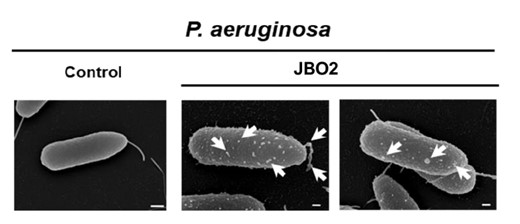
Figure 1. Representation illustrating the observed phenotypes upon induction of jbo2 in P. aeruginosa monitored by scanning electron microscopy (our unpublished data).
Aim of the study
To overcome the forbidden use of genetically improved organism as bacterial inoculants, our work aims to develop molecular inoculants based on engineered extracellular MVs that would avoid the use of living-bacteria but would improve crop yield in a green and eco-friendly approach. Engineered MVs vesicles would be added to the field together with the wild-type strain to improve the symbiotic dialogue, and thus, obtain an increase in crop yields. This proposal covers a cluster of the Horizon Europe programme, the ‘Food, Bioeconomy, Natural Resources, Agriculture & Environment’.
Methodology
- Characterization of the protein cargo of rhizobial extracellular MVs. First, we aim to determine the proteins bound to the external MVs, which are released by a rhizobial strain in the early (bacteria cultured in the presence and absence flavonoids) and late (bacteria differentiated into nitrogen-fixing bacteroids) stages of the symbiotic interaction with its host-plant. For this purpose, rhizobial extracellular MVs will be isolated, visualized by electron microscopy and their charge will be determined by proteomics.
- Mapping of extracellular protein interactions during the nodulation process. The overall objective is to elucidate the interaction partners in the host plant related to vesicle- loaded proteins. For this purpose, well-established interactomics procedures based on affinity chromatography coupled to mass spectrometry will be used.
- Engineering of extracellular MVs to enhance the symbiotic capabilities. Proteins of interest derived from proteome and interactome analyses will be fused in tandem with JBO2, which will render in the overproduction of extracellular MVs with specific protein content eventually promoter of the symbiotic process. These extracellular MVs will be purified and added to the respective wild-type strains in plant assays as molecular inoculants that avoid the used of genetically modified microorganisms.
Results
Since this line of research has been initiated recently, no major results are yet available. However, we have optimized a MV isolation workflow from both free-living and bacteroid conditions encompassing steps of ultrafiltration, ultracentrifugation, integrity validation by transmission electron microscopy and quantification by fluorescence detection.
As an example, MVs were successfully isolated and their protein cargo determined from Phaseolus vulgaris (bean) bacteroids infected with the bacteria Rhizobium tropici CIAT899 (Fig. 2).
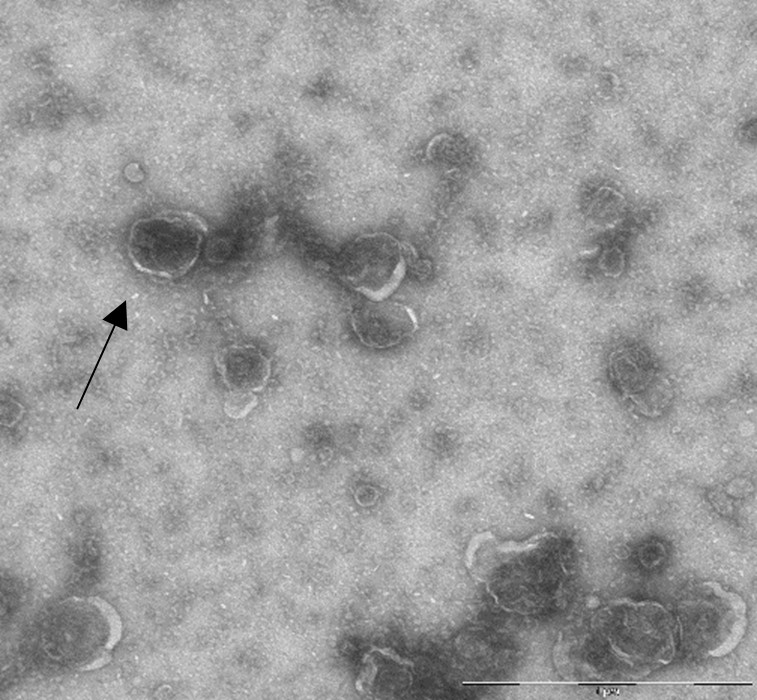
Figure 2. Representation illustrating the observed extracellular MVs from P. vulgaris bacteroids infected with R. tropici CIAT 899 monitored by negative staining (unpublished data).
Conclusion
These preliminary data are just the first but most important step for improving crop sustainability through enhancement of the symbiotic cross-talk by rhizobial MV engineering. As future prospects, these modified rhizobial MV could be added as a spray or through plant infiltrations, or they could be directly added along with the wild type strain in the field. Further research is needed to determine the optimal method for vesicle addition. The development of MV-based molecular inoculants has great biotechnological implications in the agriculture field, improving the sustainability of crops by avoiding soil and water contamination concomitant to the use of chemicals.
References
Bitto, N. J., Chapman, R., Pidot, S., Costin, A., Lo, C., Choi, J., & Ferrero, R. L. (2017). Bacterial membrane vesicles transport their DNA cargo into host cells. Scientific reports, 7(1), 1-11.
Borrero de Acuña, J. M., & Bernal, P. (2021). Plant holobiont interactions mediated by the type
VI secretion system and the membrane vesicles: promising tools for a greener agriculture. Environmental microbiology, 23(4), 1830–1836.
Carvalho, F.P. (2006) Agriculture, pesticides, food security and food safety. Env Sci Pol 9: 685- 692.
Haskett, T.L., Tkacz, A., and Poole, P.S. (2021) Engineering rhizobacteria for sustainable agriculture. ISME J 15: 949–964.
Grande, R., Di Marcantonio, M. C., Robuffo, I., Pompilio, A., Celia, C., Di Marzio, L., … & Mincione, G. (2015). Helicobacter pylori ATCC 43629/NCTC 11639 outer membrane vesicles (OMVs) from biofilm and planktonic phase associated with extracellular DNA (eDNA). Frontiers in microbiology, 6, 1369.
Guerrero-Mandujano, A., Hernández-Cortez, C., Ibarra, J. A., & Castro-Escarpulli, G. (2017). The outer membrane vesicles: Secretion system type zero. Traffic (Copenhagen, Denmark), 18(7), 425–432.
Lee R. (2010) The regulation of genetically modified organisms: comparative approaches. J Environ Law 22: 511–514.
López-Baena, F. J., Ruiz-Sainz, J. E., Rodríguez-Carvajal, M. A., & Vinardell, J. M. (2016). Bacterial Molecular Signals in the Sinorhizobium fredii-Soybean Symbiosis. International journal of molecular sciences, 17(5), 755.
Middleton, H., Yergeau, É., Monard, C., Combier, J. P., & El Amrani, A. (2021). Rhizospheric Plant-Microbe Interactions: miRNAs as a Key Mediator. Trends in plant science, 26(2), 132– 141.
Oldroyd, G. E., & Downie, J. A. (2008). Coordinating nodule morphogenesis with rhizobial infection in legumes. Annu. Rev. Plant Biol., 59, 519-546.
Orench-Rivera, N., & Kuehn, M. J. (2016). Environmentally controlled bacterial vesicle- mediated export. Cellular microbiology, 18(11), 1525–1536.
Tilman, D., Balzer, C., Hill, J., and Befort, B.L. (2011) Global food demand and the sustainable intensification of agriculture. Proc Natl Acad Sci USA 108: 20260.
Tilman, D., Cassman, K.G., Matson, P.A., Maylor, R., and Polasky, S. (2002) Agricultural sustainability and intensive production practices. Nature 418: 671-677.
Toyofuku, M., Nomura, N., & Eberl, L. (2019). Types and origins of bacterial membrane vesicles. Nature reviews. Microbiology, 17(1), 13–24.
Toyofuku, M., Schild, S., Kaparakis-Liaskos, M., & Eberl, L. (2023). Composition and functions of bacterial membrane vesicles. Nature reviews. Microbiology, 21(7), 415–430.
Turnbull, L., Toyofuku, M., Hynen, A. L., Kurosawa, M., Pessi, G., Petty, N. K., Osvath, S. R.,
Cárcamo-Oyarce, G., Gloag, E. S., Shimoni, R., Omasits, U., Ito, S., Yap, X., Monahan, L. G., Cavaliere, R., Ahrens, C. H., Charles, I. G., Nomura, N., Eberl, L., & Whitchurch, C. B. (2016). Explosive cell lysis as a mechanism for the biogenesis of bacterial membrane vesicles and biofilms. Nature communications, 7, 11220.
Walker, T. S., Bais, H. P., Grotewold, E., & Vivanco, J. M. (2003). Root exudation and rhizosphere biology. Plant physiology, 132(1), 44–51.
Willems, A. (2006). The taxonomy of rhizobia: an overview. Plant and Soil, 287(1/2), 3–14.
Exploring the Circular Economy of Electrical and Electronic Equipment: A Comprehensive Analysis of Consumer Electronics
Obando, J., Corresponding author – presenter
obandorivero@gmail.com
University of Seville, Spain
Yñiguez, R., Buitrago, E.
University of Seville, Spain
Keywords: Circular Economy, Material Circularity Index, Electronic and Electrical Equipment Waste, Electrical and Electronic Equipment, Computers, Recycling.
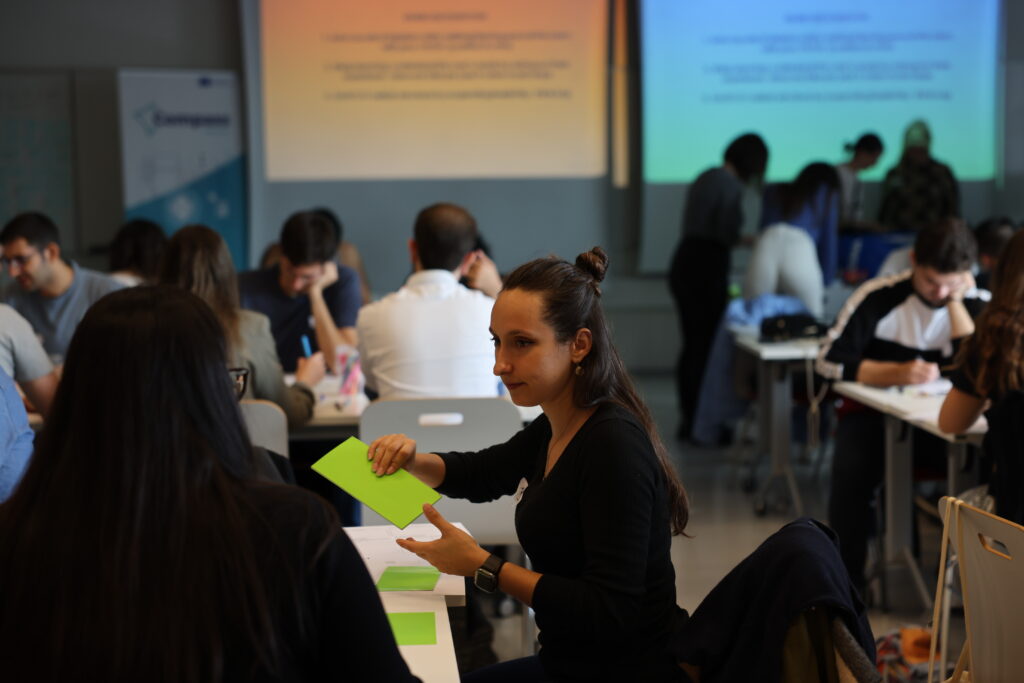
Abstract
Aim of the study
The management of waste from electrical and electronic equipment (WEEE) is a growing problem worldwide, largely due to the linearity of its production process. The valuable resources used for their manufacture are wasted at the end of the short useful life cycle, and the adoption of Circular Economy practices is proposed as the main solution for better use of resources and to slow the rate of growth of this type of waste.
The primary goal of the research conducted in this project is to explore the level of economic circularity in the production processes of different personal computer devices. To this end, the investigation will try to answer the following research questions:
- Is the degree of economic circularity the same for all types of personal computers?
- If there were a difference in the level of economic circularity between laptops and desktops, which one would be more circular? Who would be first in the race for economiccircularity?
- Can governments implement more efficient policies to accelerate economic circularity in personal computers?
The hypotheses that form the basis of this research and that we are going to try to contrast, seek to answer the research questions previously formulated:
- H1. The degree of economic circularity is not the same for all types of personal computers.
- H2.The desktop computer would be more circular than the laptop due to its greater possibility of disassembling parts and systems.
- H3. Governments can implement specific measures aimed at intensifying the economic circularity of personal computers.
The economic circularity indicators proposed by the Ellen MacArthur Foundation will be used to conduct a quantitative and qualitative analysis of the production processes.
In line with the Ellen MacArthur Foundation’s butterfly diagram model, which illustrates the concept of a circular economy through different loops of production and consumption, the economic circularity indicators proposed by the Foundation will be used to conduct a comprehensive quantitative and qualitative analysis of the production processes of personal computer devices, focusing and differentiating between laptops and desktops.
In the current analysis, available academic sources of information were used to analyse the circularity of the personal computer sector, detect the weaknesses of this production model, and make proposals for improvement to achieve an optimal circularity index. The outcome of this research could provide a model for other sectors to follow in order to promote the Circular Economy.
Background of the study and literature review
The analysis of the theoretical framework of this research highlights the importance of adopting the Circular Economy to address issues of waste accumulation and resource misuse caused by linear production systems. The Ellen MacArthur Foundation proposes a circular economy model that includes two cycles (technical and biological) whose principles need to be integrated into companies’ value creation processes. Implementing circular economy strategies can reduce costs, improve corporate image, comply with environmental regulations, among other benefits. The Electrical and Electronic Equipment (EEE) sector is one of the most resource-intensive and generates a significant amount of waste, including Waste Electrical and Electronic Equipment (WEEE).
To better study this issue concerning the management of WEEE waste, we have focused our research on the specific sector of personal desktop and laptop computers. This is due to their significant contribution to the volume of electronic waste generated globally and the unique characteristics found in this type of equipment. Personal computers, due to their limited durability, contribute to the problem of linear production processes and have a significant environmental impact. The WEEE generated by computers represents an emerging problem and a business opportunity due to their content of valuable and toxic materials.
The data utilized for this study originates from various academic articles that have investigated the mineral composition of different portable devices (Nelen et al., 2014). This data is complemented by information regarding the recycling efficiency of the various minerals originating from this category of computers (Quintalla Villar et al., 2016; Van Eygen et al., 2016).
We incorporate recycling efficiency indicators for these components as proposed by Nelen et al. (2014) and those suggested by Hopewell et al. (2009). An examination of the durability and assessment of the useful life of these devices’ components was also undertaken, drawing on the research by Maagøe and VITO (2017). The information provided by these diverse research sources assists us in compiling the necessary data to apply the models proposed by the Ellen MacArthur Foundation. These models are critical in determining the degree of circularity in desktop and laptop computers, utilizing the specified circularity indicators.
Methodology
To measure the circularity of the manufacturing and waste processes of consumer electronic products, the Ellen MacArthur Foundation’s methodology on circularity indicators will be employed. This methodology facilitates the detection of quantifiable variables or parameters to help develop a production model oriented towards process circularity. Using these circularity indicators, we can analyse how circular a specific product’s economic-productive process is.
The Ellen MacArthur Foundation (EMF) framework for developing the concept of the Circular Economy, and its measurement using indicators, posits that a model based on Circular Economy principles seeks to decouple the direct relationship between economic growth and increased consumption of virgin natural resources. Traditional linear growth models necessitate the extraction of new resources from nature, an activity deemed essential for wealth generation in society. In contrast, a process following Circular Economy principles aims to break this link by consuming fewer resources and leveraging those already in use in a regenerative or restorative manner through reuse, remanufacturing, restoration, or recycling. This minimizes potential supply problems of raw materials from limited sources and makes more efficient use of resources already in circulation.
The most effective way to assess the circularity degree of a process is through the aforementioned circularity indicators. These allow for the evaluation of a specific sector’s status and whether a process is more linear or circular based on adopted practices in the considered production process. The use of circularity indicators enables comparative measurement to determine if a studied process meets certain parameters to be deemed circular.
The EMF methodology for developing a circularity indicator mainly analyses the flow of various materials used in the product’s manufacturing and disposal, encompassing the entire useful life cycle of the product. This is crucial in the computer sector due to the level of critical elements contained in the raw materials used for these equipment constructions and the composition of waste from electrical and electronic equipment originating from these components’ disposal. By focusing on material flow, the methodology allows us to specifically focus on how natural resources used in product manufacturing are efficiently utilized, enabling their recycling and usage in new products without resorting to virgin resources, but instead betting on secondary raw materials. This allows the provision of specific and concrete figures on a homogeneous magnitude that is comparable among products and sectors, allowing observation of the progress degree in terms of circularity of a specific product.
The index developed by the EMF, and used to calculate the circularity of different consumer electronic equipment production processes, is called the Material Circularity Indicator (MCI). This index measures how restorative and regenerative a particular product’s production process is, based on the management of its material flows (The Ellen MacArthur Foundation, 2019). In this research, we will primarily use the MCI indicator and other complementary indicators to determine the economic circularity degree of various consumer electronics products and thereby propose enhancements in the management of their production processes to improve the scores obtained in these indicators.
Results, findings, and argumentations
The developed research aims to measure the circularity of the production processes of electrical and electronic devices, particularly personal computers, and subsequently draw conclusions about their degree of circularity. This research provides insight into the manufacturing practices of these products, and whether these practices align with the principles of the circular economy.
The study findings confirm the first hypothesis (H1), demonstrating that the degree of economic circularity is not the same for all types of personal computers. As for the second hypothesis (H2), the findings suggest that the desktop computer has a higher degree of circularity than the laptop due to its greater potential for parts and systems disassembly, accessibility and efficiency of the recycling process.
The findings of the study suggest that governments can indeed implement specific measures to enhance the economic circularity of personal computers, confirming the third hypothesis. However, the effectiveness of these measures will depend on various factors including policy design, implementation, and local context.
The outcomes of this study will benefit companies wishing to improve the circularity of their economic and productive practices. Moreover, they may be useful for public institutions aiming to better their incentives and policies for promoting the circular economy. By doing so, the current economic model governing our societies can be enhanced towards greater sustainability, contributing to the achievement of the sustainable development goals set for the year 2030.
Conclusions, Managerial Implications, and Limitations
The findings of this research provide valuable insights into the circularity of the production processes in the electronic devices sector, underscoring the need for further integration of circular economy principles. The measured degree of circularity, based on the Material Circularity Indicator and other complementary indicators, can inform managerial decision-making, urging businesses to consider sustainability and resource efficiency in their production processes. However, there are potential limitations to consider. The analysis is constrained by the quality and scope of available data and the specificity of the selected circularity indicators.
Furthermore, while the research provides a pathway for other sectors to move towards a circular economy, the applicability of strategies and models may vary across industries. The study emphasizes the significant potential of a circular economy in mitigating environmental impacts and stimulating economic growth, but it also acknowledges the challenges inherent in transitioning from linear to circular systems. Consequently, the study encourages further research to extend the understanding of circular economy practices and their application in various sectors.
References
Akhtar, R. (2013). Survey and analysis of public knowledge, awareness and willingness to pay in Kuala Lumpur, Malaysia e a case study on household WEEE management. Journal of Cleaner Production, 52, 185–193.
Barberio, G., Cutaia, L., Cappellaro, F., & Fantin, V. (2020). Circular Economy Good Practices Supporting Waste prevention: the Case of Emilia-Romagna Region. Environmental Engineering and Management Journal, 19, 1701–1710.
Berwald, A., Dimitrova, G., Feenstra, T., Onnekink, J., Peters, H., Vyncke, G., & Ragaert, K. (2021). Design for circularity guidelines for the EEE sector. Sustainability, 13. Retrieved from https://www.mdpi.com/2071-1050/13/7/3923.
Brunner, P., & Rechberger, H. (2004). Practical handbook of material flow analysis. The International Journal of Life Cycle Assessment, 9.
Bulow, J. (1986). An Economic Theory of Planned Obsolescence. The Quarterly Journal of Economics, 101, 729–749. https://doi.org/10.2307/1884176.
Cerdá, E., & Khalilova, A. (2016). Economía Circular. Revista de Economía Industrial, 401, 11–20. Retrieved October 7, 2021, from https://dialnet.unirioja.es/servlet/articulo?codigo=5771932.
Chancerel, P. (2010). Substance flow analysis of the recycling of small waste electrical and electronic equipment: An assessment of the recovery of gold and palladium.
Bakker, C., Wang, F., Huisman, J., & den Hollander, M. (2014). Products that go round: exploring product life extension through design. Journal of Cleaner Production, 69, 10–16. Retrieved from https://www.sciencedirect.com/science/article/pii/S0959652614000419.
Coughlan, D., Fitzpatrick, C., & Mcmahon, M. (2018). Repurposing end of life Notebook computers from consumer WEEE as Thin Client computers – a hybrid end of life strategy for the Circular Economy in Electronics. Journal of Cleaner Production, 192.
Environmental Protection Agency. (2017). Compliance & Enforcement. Retrieved October 4, 2021, from http://www.epa.ie/enforcement/weee/electricalandelectronicequipment/.
European Circular Economy Stakeholder Platform. (2018). Circular Economy Good Practices: guidelines for submissions to the ECESP website. Retrieved October 13, 2021, from https://circulareconomy.europa.eu/platform/sites/default/files/ecesp_-_website_-_gp_criteria_-_v3.pdf.
Fonteijne, C. (2021). Improving Repairability in Cordless Vacuum Cleaners. Delft University of Technology Student theses. Retrieved October 7, 2021, from http://resolver.tudelft.nl/uuid:050c779a-0456-455c-b79c-a2511396f257.
Forti, V., Baldé, C., Kuehr, R., & Bel, G. (2020). The Global E-waste Monitor 2020. Quantities, flows, and the Circular Economy Potential. UNU/UNITAR SCYCLE.
Hennies, L., & Stamminger, R. (2016). An empirical survey on the obsolescence of appliances in German households. Resources, Conservation and Recycling, 112, 73–82.
Hopewell, J., Dvorak, R. and Kosior, E. (2009). Plastics recycling: challenges and opportunities. Philosophical Transactions of the Royal Society B: Biological Sciences, [online] 364(1526), pp.2115–2126. Available in: https://www.ncbi.nlm.nih.gov/pmc/articles/PMC2873020/.
Huisman, J., Baldé, C. P., Magalini, F., Kuehr, R., & Peralta, G. (2015). E-waste statistics: Guidelines on classifications, reporting and indicators. UNU-IAS SCYCLE.
Huisman, J., van der Maesen, M., Eijsbouts, R. J., Wang, F., Baldé, C. P., & Wielenga, C. A. (2012). The Dutch WEEE Flows. United Nations University.
Kirchherr, J., Reike, D., & Hekkert, M. (2017). Conceptualizing the circular economy: An analysis of 114 definitions. Resources, Conservation and Recycling, 127, 221–232.
Maagøe, V. and VITO (2017). Preparatory study on the Review of Regulation 617/2013. Computers and Computer Servers (draft report).
Maitre-Ekern, E., & Dalhammar, C. (2016). Regulating Planned Obsolescence: A Review of Legal Approaches to Increase Product Durability and Reparability in Europe. Review of European, Comparative & International Environmental Law, 25, 378–394.
McDowall, W., Geng, Y., Huang, B., Barteková, E., Bleischwitz, R., Türkeli, S., Kemp, R., & Doménech, T. (2017). Circular Economy Policies in China and Europe. Journal of Industrial Ecology, 21, 651–661.
Nelen, D., Saskia Manshoven, Peeters, J.R., Vanegas, P., Nele D’Haese and Vrancken, K. (2014). A multidimensional indicator set to assess the benefits of WEEE material recycling. Journal of Cleaner Production, [online] 83, pp. 305–316.
Parajuly, K., & Fitzpatrick, C. (2017). Design for end-of-life. In C. Baldwin, R. Widmer, & K. Rigamonti (Eds.), Design for X – Concurrent engineering imperatives (pp. 303–330). Springer.
Prakash, S., Dehoust, G., Gsell, M., Schleicher, T., & Stamminger, R. (2016). Einfluss der Nutzungsdauer von Produkten auf ihre Umweltwirkung: Schaffung einer Informationsgrundlage und Entwicklung von Strategien gegen „Obsoleszenz“. Umweltbundesamt.
Puentes Cociña, Beltrán (2018). ¿España Circular 2030? Comentario al borrador de la estrategia española de economía circular. Revista Catalana de Dret Ambiental, 9.
Quintalla Villar, M., Calderón Barat, L., De la Cruz Gómez, L.M. and Fernández García, I. (2016). Economía Circular Para La Optimización Del Modelo De Gestión De
WEEE.[online]Disponible en: https://www.eoi.es/es/savia/publicaciones/26534/proyecto-fin-de-master-economia-circular-para-la-optimizacion-del-modelo-de-gestion-de-WEEE [Accessed on 1 Oct. 2021].
Quintalla Villar, M., Calderón Barat, L., De la Cruz Gómez, L.M. and Fernández García, I. (2016). Economía Circular Para La Optimización Del Modelo De Gestión De WEEE.[online] Available in: https://www.eoi.es/es/savia/publicaciones/26534/proyecto-fin-de-master-economia- circular-para-la-optimizacion-del-modelo-de-gestion-de-WEEE [Acceso el 1 Oct. 2021].
RREUSE. (2015). Minimum Requirements for the treatment of WEEE. Retrieved October 12, 2021, from https://www.rreuse.org/minimum-requirements-for-the-treatment-of-weee/.
The Ellen MacArthur Foundation (2015). Towards a Circular Economy: Business Rationale for an Accelerated Transition. In: Towards a Circular Economy. [online] The Ellen MacArthur Foundation. Available in: https://ellenMacArthurfoundation.org/towards-a-circular- economy-business-rationale- for-an-accelerated-transition [Accessed 15 Oct. 2021].
The Ellen MacArthur Foundation (2019). CIRCULARITY INDICATORS An Approach to Measuring Circularity NON-TECHNICAL CASE STUDIES. In: Material Circularity Indicator. [online] The Ellen MacArthur Foundation. Disponible en: https://emf.thirdlight.com/link/3jtevhlkbukz-9of4s4/@/preview/1?o [Accessed en 4 Oct. 2021].
Tukker, A. (2015). Product services for a resource-efficient and circular economy – a review. Journal of Cleaner Production, 97, 76–91.
Van Eygen, E., De Meester, S., Tran, H.P. and Dewulf, J. (2016). Resource savings by urban mining: The case of desktop and laptop computers in Belgium. Resources, Conservation and Recycling, [online] 107, pp.53–64. Disponible en: https://www.sciencedirect.com/science/article/pii/S0921344915301269.
Waste & Resources Action Programme. (2011). Electrical and electronic equipment sustainability action plan: Evidence base report. Banbury, UK: WRAP.
Zink, T., & Geyer, R. (2017). Circular Economy Rebound. Journal of Industrial Ecology, 21, 593–602.
Local Public Service Delivery: The Italian Practice
Ozuni, B
bukurie.ozuni@edu.unige.it
University of Genoa, Italy
Keywords: externalization of service delivery, local government, outsourcing, Italian practice.

The delivery of local public services through various forms of corporatization, public-public cooperation, public-private partnerships, and contracting has been externalized in recent years, leading to significant changes in the local government sector in European countries. These institutional changes have led to the restructuring of local government systems, which require greater collaboration between public and private entities. These issues are discussed in this article based on the Italian experience. This leads to a more in-depth examination of the externalization activities of local governments and the resulting organizational structures and governance arrangements. It also considers local governments in their constitutional and legal contexts. Ownership issues are crucial because of the role of the role of “community” and “place” place’ in the management of public affairs.
Initially employed for peripheral tasks, outsourcing is a management system within the realm of trilateral relationships. In this arrangement, Public Administration assumes responsibility with the aim of reducing costs and enhancing the quality of services provided to the public. However, as the system became more established, its utilization expanded to encompass essential needs. Nonetheless, the unchecked and excessive implementation of this mechanism has generated intense legal and theological debates, shedding light on the advantages and disadvantages of such contractual agreements. These discussions focus on the vulnerability of outsourced workers and the liability of service recipients, who may face compromised work outcomes. Additionally, there is a consideration of how contractors can effectively and securely utilize outsourcing. To explore potential risks to the legal frameworks governing personnel contracts in state entities, the current research initially adopts a comprehensive approach to outsourcing, tracing its historical origins and highlighting its application in the public sector. This perspective encompasses the prevailing assumptions within the field and terminologies frequently employed by experts.
The subsequent sections examine capitalism and globalization. Furthermore, the reasons underlying the rise and expansion of externalization, along with pertinent criticisms, have been elucidated. By comparing illustrative instances of this mechanism in other legal systems, particularly Italy, and incorporating legal references and jurisprudence on the subject, it may be possible to identify a more viable and effective resolution to the issue at hand.
In recent years, the delivery of local public services has undergone significant externalization, involving various forms of corporatization, public-public collaboration, public-private partnerships, and contracting out. These institutional changes have had a notable impact on the local government sectors in European countries. Consequently, local government systems have undergone reorganization, necessitating increased cooperation between public and private entities. This study examines these challenges with reference to the Italian experience, which prompts a deeper investigation into the externalization practices of local governments, as well as the resulting organizational structures and governance arrangements. The study also considers the constitutional and legal frameworks within which the local government operates, recognizing the significance of ownership concerns in the management of public affairs.
Initially, outsourcing was primarily employed for ancillary tasks and fell under the category of trilateral relationships. In this context, Public Administration assumes responsibility for its implementation, aiming to reduce costs and enhance the quality of services provided to the population. However, as practice became more established, it expanded to cover essential needs. This study takes a general perspective on outsourcing, tracing its historical origins and highlighting its usage in the public sector, in order to examine potential legal challenges associated with personnel contracting employed by state organizations. This study sheds light on the assumptions prevalent in this field and the terminology commonly used by experts.
The discussion further explores the concepts of capitalism, globalization, and neoliberalism. It also addresses the reasons underlying the emergence and growth of externalization, along with relevant criticism. By comparing typical examples of this mechanism in various legal systems, particularly within Italy, and by providing legal references and jurisprudence, this study aims to find practical and efficient solutions to these issues.
The methodology employed in this study primarily relies on indirect and bibliographical approaches. It draws upon relevant books, scholarly articles, and jurisprudential principles established by the superior and regional labor courts. Through a deductive process, this research aims to determine the appropriate interpretation of the topic, ultimately contributing to a more effective resolution of the challenges at hand.
The methodology applies a deductive and heavily bibliographical approach to correctly interpret a topic. It draws on books, scholarly articles, and the case law of the higher regional and state labor tribunals. This study demonstrated a viable and efficient solution to this issue, showcasing a practical and effective approach based on the researcher’s findings.
Activities are delegated to local governments in Italy, which consist of provinces and municipalities. According to the four levels of government in Italy, the region’s laws must also be upheld by provinces and municipalities. The legal foundations of local governments are not always secure. The laws governing the delivery of local public services have changed numerous times over the past 20 years. The management of local services with economic relevance (such as energy, water, waste disposal, and public transportation) is distinguished from the management of local services without economic significance (such as theatres and museums). The arrangements for the delivery of economically significant services are topics of discussion and concern. Due to pressure from the European Commission, there is support at the national government level for limiting direct management and mixed ownership management in favour of the competitive selection of public and private suppliers through public procurement.
Local governments are independent of the higher government tiers. With the constitutional amendment of 2001, local governments in Italy gained increased independence from the federal government. Local governments have been able to diversify how they offer local public services because of an increase in autonomy. As a result, the institutional landscape today comprises a variety of externalized arrangements incorporating corporatization, PPPs, and contracting out, in addition to the conventional internal entities responsible for the direct management of services.
Municipalities in Italy participate in various PPPs, although the sectors in which they operate vary. PPPs have been developed in Italy, particularly for the utilities sector (water, electricity, gas, and waste disposal).
Social services, as well as internal services such as building maintenance, IT services, administrative services, catering services, and office cleaning, are increasingly being outsourced by Italian municipalities.
Inter-municipal cooperation has emerged as a popular means of delivering improved services by achieving economies of scale, particularly for small- and medium-sized local governments. This has led to the formation of a number of cooperative alliances and projects by two or more local governments concerned with the efficient provision of services across a vast geographic area.
The widespread use of corporatized entities in business form as a suitable method for managing a variety of local activities has been advocated by the local government in Italy. Companies’ ownership structures varied, but their governance arrangements were comparable. They are often joint stock firms in Italy that can trade on stock exchanges and do so frequently.
Local government systems have changed because of the expansion of different groups that offer public services. Italian towns must communicate with various parties because they are in charge of the services provided to the public. The propensity of external (totally or partially owned) firms to operate public services suggests that municipalities must create suitable regulatory and control capacities (Riccaboni, 2003).
This indicates that strengthening local governance structures is essential to ensure the growth of competitive and more efficient public service sectors without losing sight of the need to serve the public interest.
The Italian local government has practiced various forms of externalization to provide citizens with higher-quality services in a more competitive environment. The creation of organizations wholly or partially in a corporate form has been the predominant and most important trend. The need to create more business-like organizations with varying degrees of autonomy from local governments has driven the choice of an externalized, private-law form of organization, particularly for the management of economically important services (electricity, gas, water, waste management, and public transportation). In essence, reform pressures have promoted externalization through corporatization, in line with the notion that areas of organizational activity are similar to other areas facing the same environmental conditions because they are affected by them (DiMaggio & Powell, 1983).
Overall, the data show that externalization measures have significantly altered how local public services are provided, thus changing local governance structures (Grossi & Mussari, 2004). Different institutional approaches and the unique characteristics of several public service sectors have heightened the relationships and dependencies among distinct actors (Reichard, 2006).
Local governments increasingly exercise their powers by collaborating or competing with a variety of public and private providers, requiring them to effectively deal with a range of potentially conflicting circumstances (Goldsmith & Eggers, 2004).
Local governments increasingly exercise their powers by collaborating or competing with a variety of public and private providers; as a result, they must deal with a range of potentially conflicting circumstances. Most of the arrangements discussed in this article were inspired by the desire to deliver public services more efficiently, resulting in dilution rather than elimination of public ownership. General public satisfaction with the fact that there is now a wider gap between the civic institutions themselves and the providers of local public services as the price for the expected increase in efficiency should be explored in future research.
References
DiMaggio, P.J. & Powell, W.W. (1983) ‘The iron cage revisited: institutional isomorphism and collective rationality in organisational fields’, American Sociological Review, Vol. 48, No. 2, pp.147–160.
Goldsmith, S. & Eggers, W.D. (2004) Governing by Network. The New Shape of the Public Sector, The Brookings Institution, Washington.
Grossi, G. (2007) ‘Governance of public-private corporations in the provision of local utilities in the Italian case’, International Public Management Review, Vol. 8, No.1, pp.130–151.
Grossi, G. & Mussari, R. (2004) ‘Governance of institutional and economic relationship: the case of Italian local governments’, paper presented at the Eighth International Research Symposium on Public Management, Budapest, 31 March–2 April 2004.
Mussari, R. (2006) ‘Accountability and reporting: new developments in Italian local governments’, in Reichard, C., Mussari, R. and Kupke, S. (Eds.): The Governance of Services of General Interest Between State, Market and Society, Wissenschaftlicher Verlag, Berlin, pp.13–33.
Reichard, C. (2006) ‘Strengthening competitiveness of local public service providers in Germany’,
Riccaboni, A. (2003) ‘Interessi pubblici e privati nel settore idrico: Le attività di pianificazione e controllo’, in Riccaboni, A. (Ed.): Acqua: Fra Incidenza Sociale ed Efficienza Gestionale, Il Ponte Editore, Firenze, pp.323–353.
Map and Gap Analysis of Sustainable Packaging from Art/Design and Learning Perspectives
Jung-Majanen, Hye
Corresponding author – presenter
Hye.jung-majanen@metropolia.fi
School of Smart and Clean Solution, Metropolia UAS, Finland
Hurme, Nina1
Maijanen, Aila1
Laiho, Tiina1
Vainio, Teija1
Simola, Kaisa1
Laine, Pia-Tuulia2
Palm, Jarmo2
Roman, Mona3
1 CLIC Innovation Ltd, Finland
2 School of Smart and Clean Solutions, Metropolia UAS, Finland
3 Innovation Hub “Functional City of People”, Metropolia UAS, Finland
Keywords: Sustainable packaging; Bio-Based packaging; Circular Economy; Innovation ecosystem; Quadruple Helix
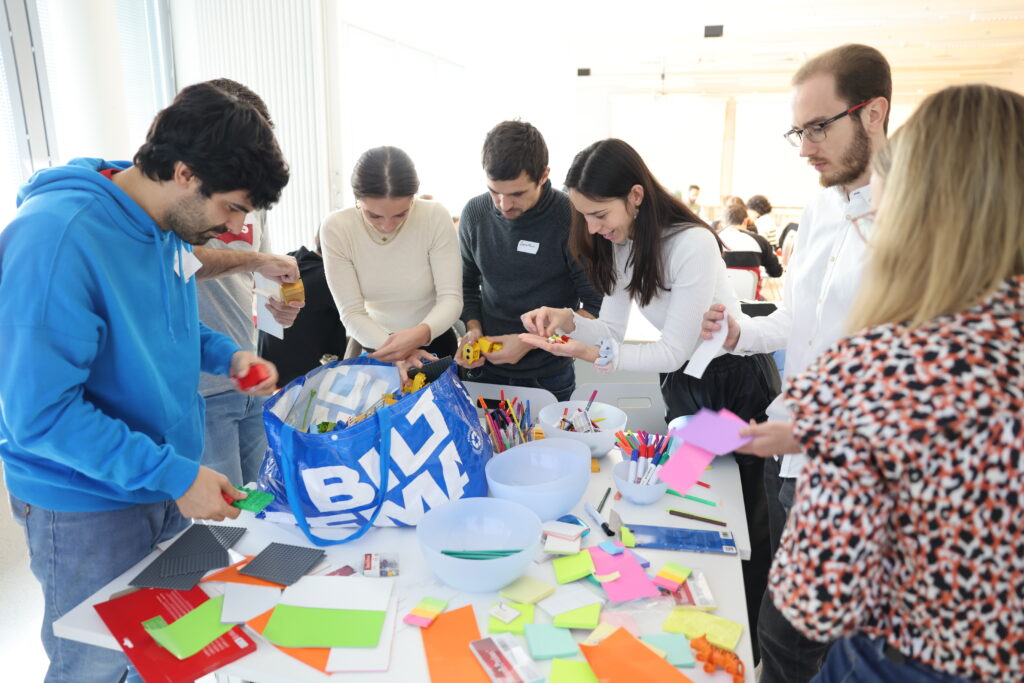
Background of the study
The Engage4BIO (Better understanding, intensified engagement, training, and development in regional bio-based systems) is a Horizon Europe project. The project aims to strengthen circular, sustainable bioeconomy and sustainable regional development through processes of design thinking, co-creation, (re)training, and skills development (Engage4BIO, 2023). The consortium is composed of 5 hubs; circular and bio-based textiles hub (NL), agriculture and agri-food industries hub (HU), wood and interior hub (AT), blue bioeconomy hub (IT), and bio-based and sustainable packaging hub (FI) (Engage4BIO, 2023).
The Finnish bio-based and sustainable packaging hub serves as an open ecosystem and innovation facilitator for organizations interested in finding new business or building new competences in bio-based sustainable packaging (Engage4BIO, 2023). In addition to innovation facilitator, the hub serves as a network for learning and knowledge sharing.
Metropolia UAS is responsible in the Engage4BIO project to facilitate training and mentoring for hub stakeholders, representing the quadruple helix actors (industry, academia, public sector, and civil society).
Aim
In the first project phase, CLIC Innovation together with Metropolia UAS prepared map and gap analysis on sustainable packaging. This was to identify the key activity areas necessary to enhance the transition towards circular bioeconomy and as to develop the co-creation and development activities of the Finnish sustainable packaging hub within Engage4BIO actions. The primary objective of this paper is to describe the current situation and the focus areas facilitating stronger uptake of sustainable packaging from Arts & Design and Learning perspectives.
Methodology
In the participatory workshop with CLIC Innovation and Metropolia UAS, the questions on the map and gap canvases were mapped and questions for the interviews were defined. In total, 14 quadruple helix actors of sustainable packaging ecosystem were interviewed. The interviewees are listed in Table 1.
Table1. The interviewees for the Map and Gap analysis.
| Title | Organization (Quadruple Helix representation) | |
|---|---|---|
| 1 | Senior lecturer | Aalto University (Academia) |
| 2 | RDI Manager | The Finnish Lifelong Learning Foundation (Academia, Civil Society) |
| 3 | Director | The Finnish Lifelong Learning Foundation (Academia, Civil Society) |
| 4 | Manager | The Finnish Forest Industries Federation (Industry) |
| 5 | CEO | The Finnish Packaging Association (Industry) |
| 6 | Communication manager | Suomen Kiertovoima ry (Industry) |
| 7 | Research Team Leader | VTT (Academia) |
| 8 | Senior Customer Manager | Natural Resources Institute Finland (Academia) |
| 9 | Manager, Innovation Policy | The Finnish Forest Industries Federation (Industry) |
| 10 | Senior Adviser | The Finnish Forest Industries Federation (Industry) |
| 11 | Senior Expert | Motiva (Government) |
| 12 | Project Manager | Helsinki Region Environmental Services HSY (Government) |
| 13 | Project Manager | Helsinki Region Environmental Services HSY (Government) |
| 14 | Senior Adviser, EU Affairs | Helsinki-Uusimaa Regional Council (Government) |
Results
Mapping
Challenges and obstacles
A variety of challenges and obstacles in the current operating environment and way of working on sustainable packaging were identified. Although customers and consumers perceive themselves as rational, they don’t act based on facts and are not eager to change their habits. It is also a challenge to avoid greenwashing when communicating. The volumes and quality of the used packaging is not well known; lack of data on packaging and packaging waste is scattered making rigorous information for decision-making hard to find.
In learning activities, the current funding is focused on degree students. As externally funded projects provide funding only for the project period, there is no sustainable funding for life- long learning. Funding and support for innovative co-creation experiments to move new ideas from universities to industrial practice is lacking. Also, finding new talent and recruitment are ongoing challenges in sustainable packaging.
Enablers and opportunities
In arts and design, the enablers and opportunities include external pressure for a change such as customers’ and consumers’ demanding for more sustainable packaging alternatives from companies. It is important to create understanding of consumer behaviour and experience and build customer engagement. Communications is in critical role and future-oriented thinking could strengthen understanding on circularity. Both carrot and stick could encourage the
necessary changes and combining communication expertise with content knowledge is needed. In learning activities, the enablers and opportunities include improved availability of Ministry funding for degree students and of external RDI funding for lifelong learning provision as well as flexible learning opportunities for lifelong learning to strengthen the needed skills.
Gap analysis
Value propositions and expected impacts of new/proposed activities
Design could play a crucial role in raising consumer awareness on the benefits of wood, strengthening the trend towards sustainable packaging, and making the shift towards sustainable packaging understandable and desirable. By facilitating environment-conscious decision-making and learning on sustainable packaging, design could make this shift of behaviour easier. Overall, there is an opportunity to make sustainable packaging more tangible to humans. Enhanced learning opportunities could be offered in topics like circular design thinking, understanding business models, and upcoming regulatory environment.
Upskilling of staff tends to increase satisfaction at work, resulting in continuous employment, better understanding of the challenges and opportunities in transition to sustainable packages, and new innovations and operating models developed for sustainable packaging.
Challenges and obstacles
There is still limited understanding on the role that design could play in supporting the shift towards sustainable packaging. The old practices and way of thinking should be challenged and changed. Consumers often find it challenging to understand the sustainability and
recyclability of packaging due to the use of complex terms, concepts, and various eco-labels. In learning activities, the challenges and obstacles include specialization adult education programs and training do exist only partly, packaging design training is partly missing, lifelong learning opportunities are missing or not available, there is too much control of learning content by funding authorities (ministry). Also, financing is primarily targeted towards degree education, and on top of that there is only limited offering which is fragmented, and multidisciplinary approach is largely missing. Despite some focused offering for degree students, resources are limited due to the emphasis on degree education. There is a need for more micro-credential and short-term courses, as well as greater specialization in universities on the topic of packaging.
Enablers and opportunities
Design can help in making the shift to sustainable packaging understandable and desirable as well as sustainable packaging more touchable and meaningful. Environment-conscious decision-making could be supported by better science-based information. To mention some concrete tools, there could be ways to include reliable information and labelling on the origin and ways of recycling on packaging and an ethical “playbook” on how to communicate on sustainable packaging.
In addition to funding, the enablers and opportunities for learning activities include better information on education opportunities, and achieving a better demand-supply balance which could also encourage companies to invest in training. Collaboration among education institutions regionally and nationally and understanding not only packaging materials but also the full value chain is critical. This should be supported by interdisciplinary understanding on how to shift to sustainable packaging including technologies, materials, applications, marketing, commercialisation, customer/consumer perspective, as well as agile development and collaborative mindset.
Learning activities scenarios
Learning opportunities on sustainable packaging are highly fragmented and there is lack of packaging specific learning activities. The following learning activities have been identified (Table 2) to address critical gaps in areas such as consumer awareness, communication, design skills, innovative experimentation, EU regulatory follow-up, and innovation and collaboration skills.
| Scenario | Title | Description | Actors | Learning purpose | Learners |
|---|---|---|---|---|---|
| 1 | Consumer awareness raising on sustainable packages | Involve non- formal education providers for the engagement of consumers for co-design and prototype testing | Academia, Civil society, Industry, Public sector | Sustainability thinking and awareness of difficulties and possibilities in transition to sustainable packaging | Citizens |
| 2 | Communication and design skills | Education and training on communication and design skills for sustainable packaging | Academia | Ability to make the vision concrete and visual. Provide evidence on the significance of change to diverse target groups. To learn about design principles for sustainable packaging and how to attract the consumers. | Industry |
| 3 | How to take innovative ideas/concept s into practice? | Education and training on taking innovative ideas/concept s into practice through innovative experiments | Academia, Public Sector | Support for companies to take innovative ideas & concepts to industrial use. Financial, project and change management support. | Industry |
| 4 | How to follow upcoming and new EU regulations in sustainable packaging? | Education and training on how to follow newest update about sustainable packaging EU regulations | Academia, Public Sector | Ability to promptly get knowledge about upcoming and new EU regulations in sustainable packaging | Industry |
| 5 | Innovation and collaboration skills | Competence/s kills regarding the lifecycle of packaging and the role of different actors in the value chain, facilitating collaboration and innovation between different actors in the packaging lifecycle | Academia, Industry, public sector | Ability to collaborate and innovate across sustainable packaging value chain | Civil society, Industry, Public sector, Academia |
Table 2. Learning activities scenarios
Conclusions
The opportunities of sustainable packaging design have not yet fully exploited. Limiting the role of design to product and service development hinders the full exploitation of its potential. Design tools can be highly valuable in designing future concepts and systems with understanding on the full lifecycle of packaging and how it interacts with its environment and people across the value chain. There is an opportunity to make sustainable packaging more tangible to humans. The shift to sustainable packaging should be made more understandable and desirable. Design tools could make sustainable packaging more tangible and meaningful and support concretising communications with visualisations, for example. It is about using creative ways/experience to engage consumers to packaging and sustainability.
Developing learning activities needs collaboration and better resources. Learning activities can help different actors to gain strengthened expertise and capabilities. Improved funding availability for degree students, lifelong learning provision, and flexible learning opportunities would support strengthening the necessary skills. Changing the old practices and way of thinking calls for holistic learning across the whole packaging value chain. The shift towards sustainable packaging requires interdisciplinary expertise in technologies, materials, applications, marketing, commercialisation, customer/consumer perspective, as well as agile development and collaborative mindset.
The key findings of the map and gap analyses are used as the basis for developing a concrete implementation plan. The embedding of art and design in the activities will increase design thinking and co-create training, retraining, mentoring, and skills development. Such implementations will be planned in a transferable way so they can be further applied in various parts of Europe (Engage4BIO, 2023).
References
Engage4BIO. (2023). https://www.engage4bio.eu
Acknowledgements
This project has received funding from the European Union’s Horizon Europe Research and Innovation Programme under grant agreement No. 101059565, Engage4BIO. We thank the interviewees for their valuable insights and time. This article however reflects only the authors’ view. Neither the Research Executive Agency nor the European Commission is responsible for any use that may be made of the information it contains.
Mapping Residential Segregation, Socio Spatial Inequalities and Spatial Patterns Through Machine Learning Tools in Seville Province, Spain. A Socio Ecological and Sustainability Challenge.
Calderon, J.J.
Corresponding author – presenter
joscalant@alum.us.es; University of Seville, Spain
Keywords: Urbanization; GIS; Spatial Stratification; Social inequalities; Socio ecological Systems; Machine Learning
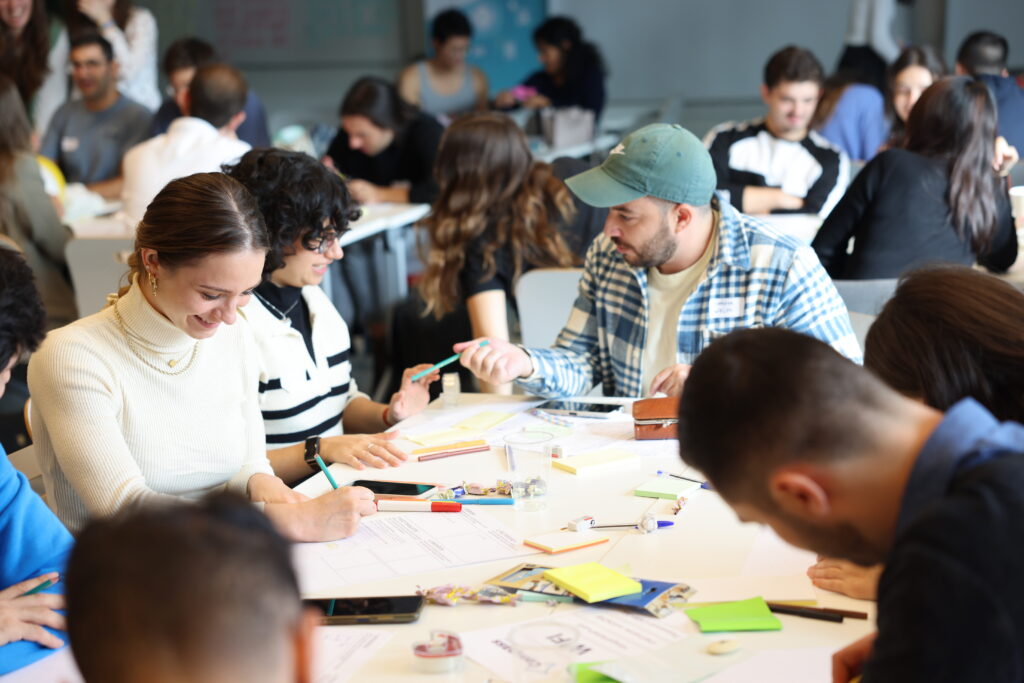
Background of the study/literature review
Residential segregation refers to the spatial separation of different social groups within urban areas (Bolay et al., 2016), often leading to unequal access to resources, opportunities, and services (Mayne, 2017). Understanding the dynamics of residential segregation is crucial for identifying the underlying factors contributing to socio spatial inequalities and designing effective policies for urban development and social integration (Elmqvist et al., 2013). Some cities grow spontaneously following an unsustainable model of urban growth, based on the principles of the modern architecture movement of the last century that promotes sprawling (non-densified) cities, based on the use of private cars, with a lack of connectivity (Martine et al., 2008). These patterns are characterized by the concentration of marginalized and disadvantaged groups in specific neighbourhoods, often marked by limited access to quality housing, education, healthcare, and employment opportunities (Davis, 2006). The problems inherent in the construction of habitat is the proliferation of irregular settlements
(Parker & Asencio, 2009). These areas are characterized by their intense socio economic dysfunctions and constantly maintain declining conditions (Ozdenerol, 2019). In some cases, unplanned urban sprawl generates a certain degree of environmental impact that manifests itself in ecological fragility of the natural resources (Singh, 2013). Given the incipient escalation of population growth rates and consequently of urban land occupation in a local context, the need arises to search for research instruments that incorporate technological variables with the human dimension and the conservation of environmental and territorial dynamics (Williams & Donald 2011). In general, the lack of physical planning in these sites leads to disorders that affect both the natural habitat in their direct and regional area of influence, as well as the quality of life of hundreds of thousands of people, who do not have access to economic opportunities and social (Merrifield & Swyngedouw, 1997). Unfortunately, these groups are organized informally and live in a considerable degree of marginalization and poverty (Vigano & Cavalieri 2019).
Some authors have contributed to the research of spatial segregation in Southern Europe from the socio ecological perspective (Mela & Toldo, 1996) the have linked urban poverty and climate change and determine the viability of the built environment (Ogawa et al., 2018). The existing physical planning policy and institutional set-up do not address these grassroots adaptive capacities in an integrated manner (Merrifield, 2013). However, what happens in the planning and management of the built environment has important knock-on effects for the urban dwellers living in informal settlements (Boone & Fragkias, 2013). Thus, we observe a somewhat unidirectional unintended influence of the broader urban environment on these settlements. Vries & Goudsblom (2003) have deepened the investigation of the high levels of urbanization in the Mediterranean coast of Spain and diagnosed distant, dispersed and disconnected urban spatial growth to reform the urban and housing policy agenda. (Crampton, 2010) defines the current urban and regional trends Europe as the conversion of land use in predominantly rural to urban land indicates urbanization processes and examines the change in land use in Seville Province. More recently (Ong & Gonzalez, 2019) has explored the spatial distribution using machine learning techniques of the population by studying metropolitan patterns and the dynamics of Spain, finding that in the slum areas of have a significant proportion of their migrants’ inhabitants live in self-constructed irregular settlements, and informality predominates. economy, poverty, segregation and spatial inequalities.
Aim of the study including originality & novelty
The aim is to communicate the audience the effects of the urbanization process in Seville Province cities and towns network from a socio ecological approach. This scope includes to dimension the historical and demographic processes of the phases of urbanization that have led to the formation of human settlements, identifying the slum’s spatial network and potential from the geographical approach, and to analyze the environmental impact of migration in the communities with the support of Machine Learning engine tools (such as geopandas, rgdal, rgeos and maptools libraries). Through the integration of quantitative data analysis, mapping techniques, and qualitative research methods, the research aims to unravel the complex interplay of socioeconomic factors, demographic characteristics, historical legacies, and urban planning policies shaping residential segregation in the study area. The study adopts a comparative approach, examining the multiple cities across Southern Spain autonomous community to analyze the commonalities and variations in residential segregation patterns within the framework of socio ecological systems.
Methodology
This research work involves modeling the impacts of urban growth and dynamics using the spatial information structure in the emerging urban network. The challenge was to identify overcrowded dwellers with severe peripheral and environmental inequalities supported by geo-information technologies, Machine Learning tools and spatial awareness to map and analyze urban deprivations/slum areas. We also delve into the intricate realm of urban inequality and its multifaceted manifestations, aiming to shed light on the importance of research methods in understanding and addressing this pervasive problem. By investigating various research approaches, ranging from quantitative analysis to qualitative research to participatory action research, it was uncovered the underlying dynamics and drivers of urban inequality, ultimately striving to pave the way for evidence-based interventions and transformative policies that promote equity and inclusion in cities.
The strategic geographical scale of the territory allows us to understand the problems of the social sciences, including that of the present object of transformation. Geographic Information Systems (GIS) are analytical tools and instruments that conceptualize, diagnose, and even systematize proposals for the challenges cities face. Under the premise of the interdisciplinary approach, the possibility of conceiving urban structures as complex entities arises, which for its analysis requires a deepening in the most diverse areas of knowledge, such as social sciences, engineering, computing and applied creative sciences. to design. Today, software tools (Quantum GIS, Spatial or Geostatistical Analyst, Network Analyst and VISSIM) allow studying and developing techniques in evaluation, forecasting and simulation models for planning environmental management areas and urban networks. It was also necessary to conduct a comprehensive review of existing literature to identify key theories, concepts, and methodologies employed in previous research on urban inequality, spatial patterns, and residential segregation. This review helped to contextualize your research and identify potential research gaps in the case studies.
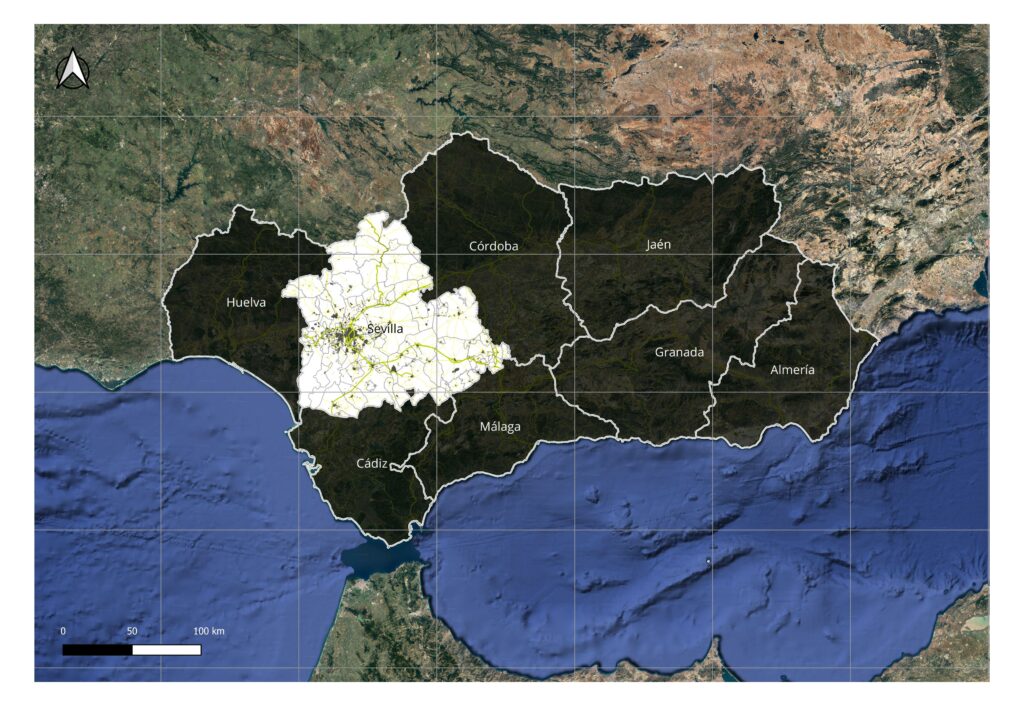
Figure 1. Study area: Seville Province. 2021 Own elaboration base on Junta de Andalucía.
Result/findings and argumentation
The research reveals that residential segregation can exacerbate environmental injustices, such as unequal exposure to pollution, limited access to green spaces, and inadequate infrastructure provision, thereby perpetuating social and environmental vulnerabilities. Additionally, the analysis reveals the presence of spatial enclaves that exhibit higher levels of social homogeneity and economic advantage, reinforcing existing inequalities. For example, according to information from INE (National Statistics Institute) the poorest neighborhood in Spain is located in the province of Seville, Los Pajaritos.
Space-time interaction plays a fundamental role in the configuration and management of the territory. The theoretical foundation of the spatial analysis processes resides in the urban form as an essential element of studies in the city, which is why diagnoses are necessary for the formulation of urban analysis (from the field of public policies) aimed at creating sustainable spaces. The analysis reveals the spatial patterns of residential segregation in the south of Spain covering around 5% of all urban areas. Findings includes variations in segregation levels among different population groups, identification of highly segregated neighbourhoods or municipalities, and changes in segregation over time. Segregation indices are computed to quantify the degree of residential segregation. Commonly used indices include the Dissimilarity Index, Isolation Index, and Exposure Index. These indices provide numerical measures that reflect the level of separation between different population groups within a given area. All of these indexes are higher comparing with the rest of Spain.
The historical legacy of Spain, including colonialism, migration patterns, and urban planning decisions, has contributed to the present-day residential segregation observed in the region. Economic disparities and the availability of affordable housing options significantly influence residential segregation. Limited economic opportunities in certain areas and high housing costs in others contribute to spatial concentration. Social networks and individual preferences also play a role in residential segregation. Residents often choose to live near individuals from similar backgrounds or share common cultural values, contributing to the concentration of specific groups.
Conclusion, managerial implications and limitations
The implications of this research highlight the need for comprehensive urban planning strategies that address residential segregation and socio spatial inequalities. Residential segregation in the southern region of Spain presents significant challenges that require thoughtful policy interventions. By understanding the patterns, causes, and consequences of residential segregation, policymakers can implement targeted measures to create more inclusive, equitable, and integrated communities. The analysis reveals notable residential segregation patterns within the southern region of Spain. Certain neighbourhoods or districts exhibit high concentrations of specific social groups, while others remain more diverse. Ethnic and cultural segregation is observed in several areas, particularly in cities with a significant immigrant population. Concentrated neighbourhoods predominantly house immigrants from specific countries or regions, leading to limited interaction and potential social isolation. Socio economic disparities are evident in residential patterns, with wealthier populations tending to cluster in certain neighbourhoods. These areas often offer better amenities, services, and infrastructure, perpetuating inequality Policy interventions and planning initiatives should aim to foster inclusive, mixed-use neighbourhoods, enhance social cohesion, and promote equitable access to resources and environmental amenities.
References
Bolay, J.-C., Chenal, J., & Pedrazzini, Y. (2018). Learning from the slums for the development of emerging cities. Springer International Publishing.
Boone, C. G., & Fragkias, M. (2013). Urbanization and sustainability linking Urban Ecology, Environmental Justice and Global Environmental Change. Springer Netherlands.
Crampton, J. W. (2011). Mapping: A critical introduction to cartography and GIS. Wiley-Blackwell.
Davis, M. (2017). Planet of slums. Verso.
Elmqvist, T., Fragkias, M., Goodness, J., Güneralp, B., Marcotullio, P. J., McDonald, R. I., Parnell, S., Schewenius, M., Sendstad, M., Seto, K. C., & Wilkinson, C. (2013). Urbanization, biodiversity and Ecosystem Services: Challenges and opportunities. Springer Nature.
Huang, X., & Jensen, J. R. (1996). Machine learning approach to automated construction of knowledge bases for expert systems for Remote Sensing Image Analysis. Expert Systems with Applications, 11(4). https://doi.org/10.1016/s0957-4174(97)86773-5
Martine, G., McGranahan, G., Montgomery, M., & Fernández-Castilla, R. (2008). The New Global Frontier: Urbanization, poverty and environment in the 21st Century. Earthscan.
Mayne, A. (2017). Slums: The history of a global injustice. Reaktion Books.
Mela, A., & Toldo, A. (2019). Socio spatial inequalities in Contemporary Cities. SpringerInternational Publishing.
Merrifield, A., & Swyngedouw, E. (1997). The urbanization of injustice. New York University Press.
Merrifield, A. (2013). The politics of the encounter: Urban theory and protest under planetary urbanization. The University of Georgia Press.
Ong, P. M., & Gonzalez, S. R. (2019). Uneven urbanscape: Spatial structures and ethnoracial inequality. Cambridge, United Kingdom; New York, NY: Cambridge University Press.
Ogawa, V. A., Shah, M. C., & Nicholson, A. (2018). Urbanization and slums: Infectious diseases in the built environment: Proceedings of a workshop. The National Academies Press.
Ozdenerol, E. (2019). Spatial health inequalities: Adapting GIS tools and data analysis. S.l.: CRC PRESS.
Parker, R. N., & Asencio, E. K. (2009). GIS and Spatial Analysis for the Social Sciences: Coding, mapping, and modeling. Routledge.
Singh, S. J., Haberl, H., Chertow, M., Mirtl, M., & Schid, M. (2013). Long term socio- ecological research: Studies in society-nature interactions across spatial and temporal scales. Springer Netherlands.
Vigano, P., Cavalieri, C., & Barcelloni, M. (2019). The horizontal metropolis between urbanism and urbanization. SPRINGER.
Vries, B. D., & Goudsblom, J. (2003). Mappae Mundi: Humans and their habitats in a long- term socio-ecological perspective. Amsterdam University Press.
Williams, A., & Donald, A. (2011). The lure of the city: From slums to suburbs. Pluto Press.
Haaga-Helia Publications 9/2024
ISSN 2342-2939
ISBN 978-952-7474-69-3